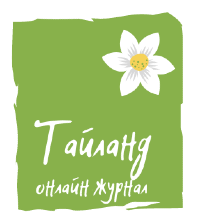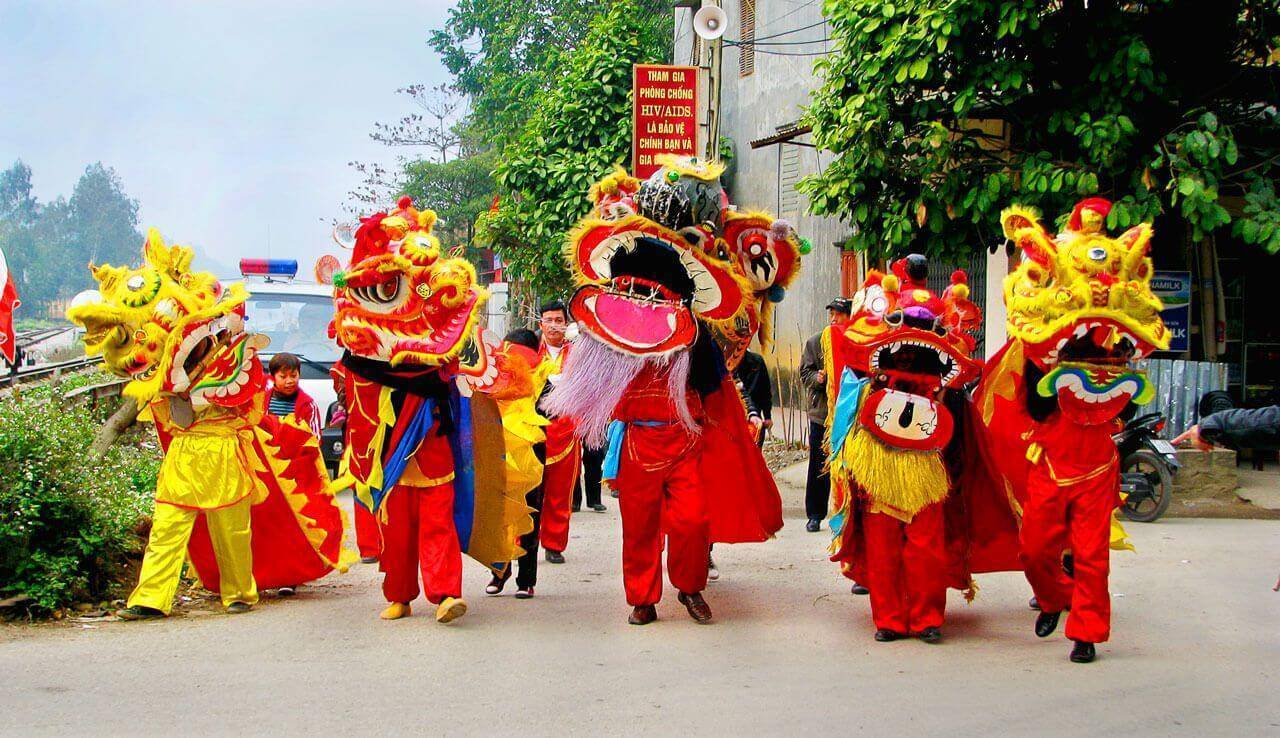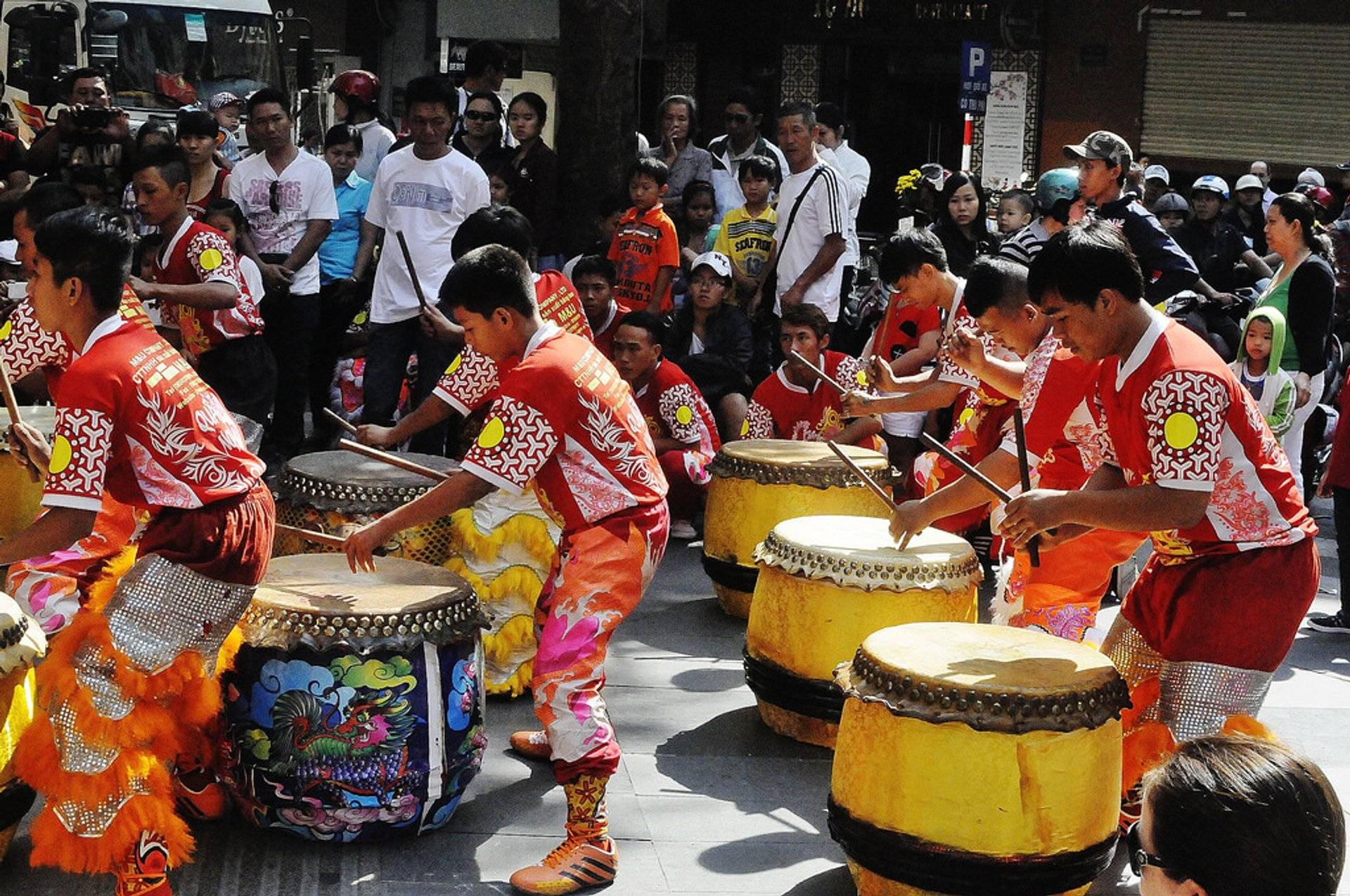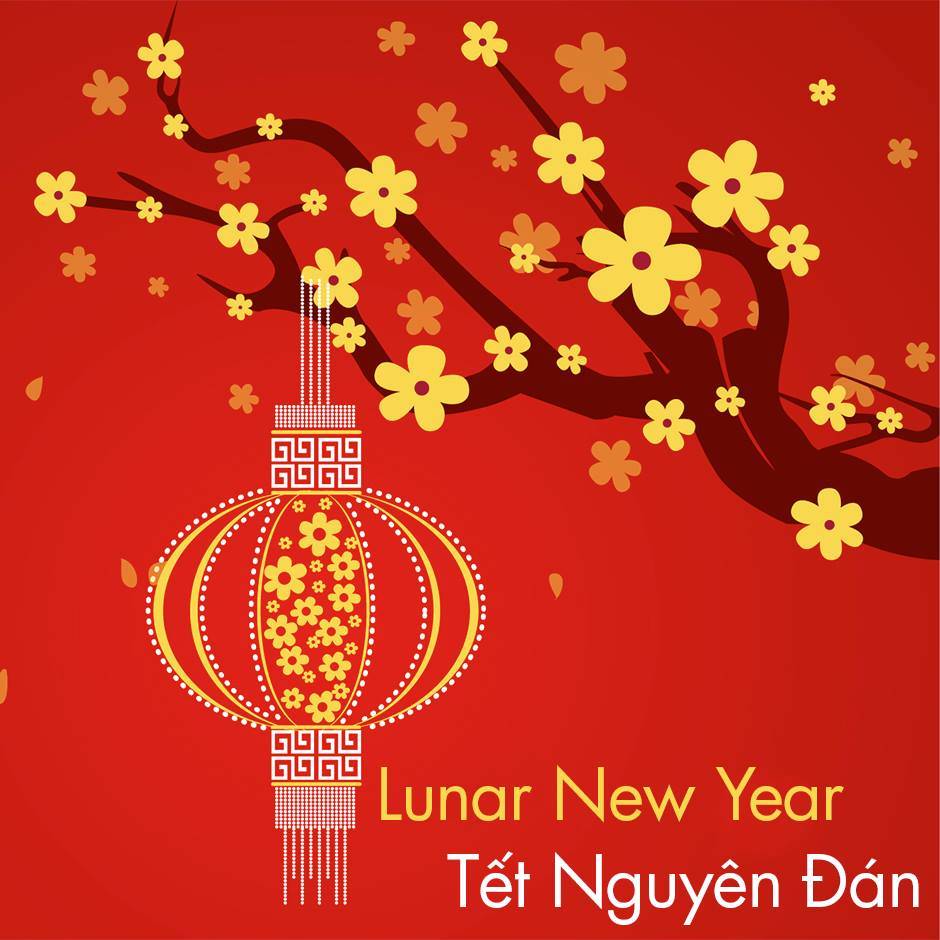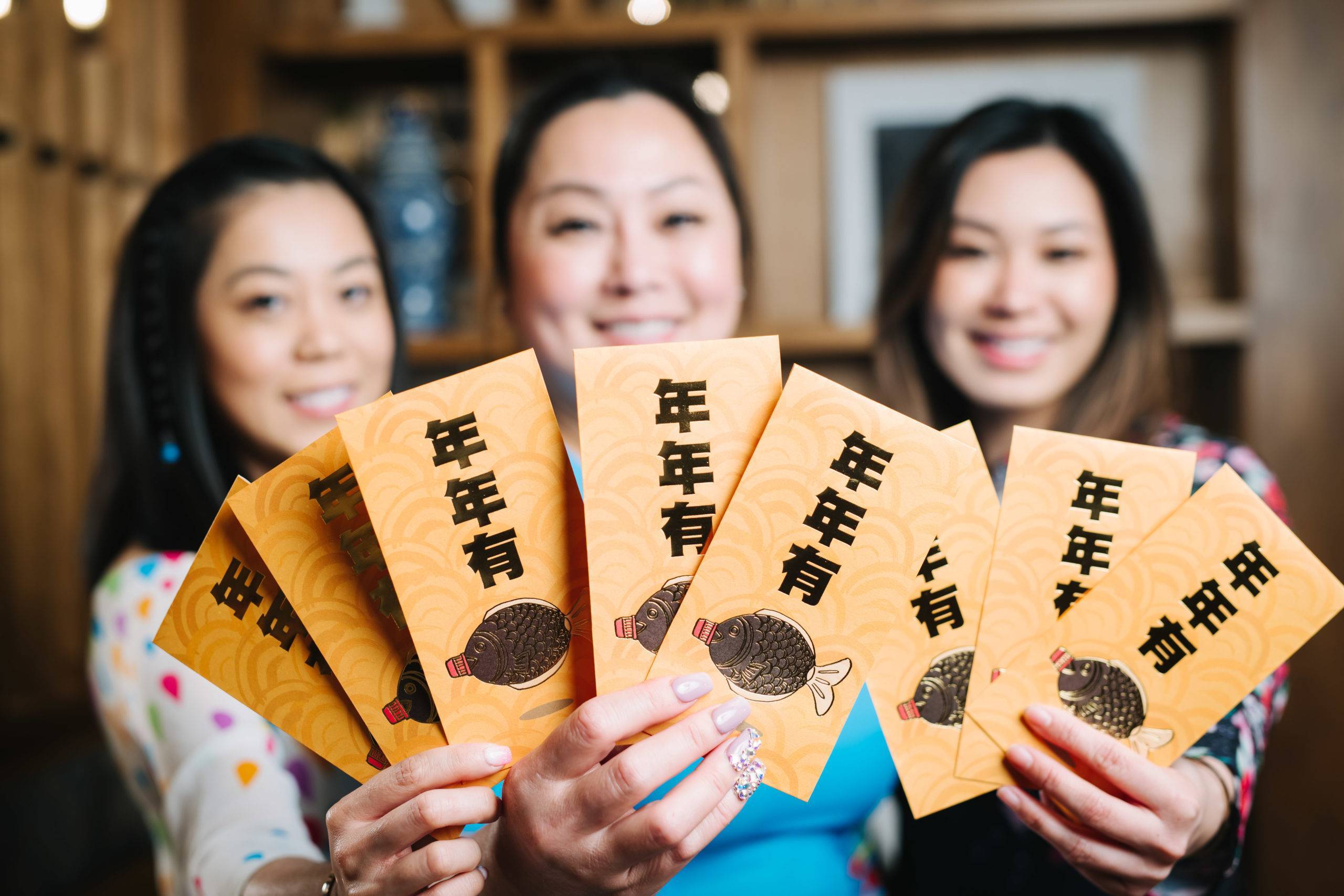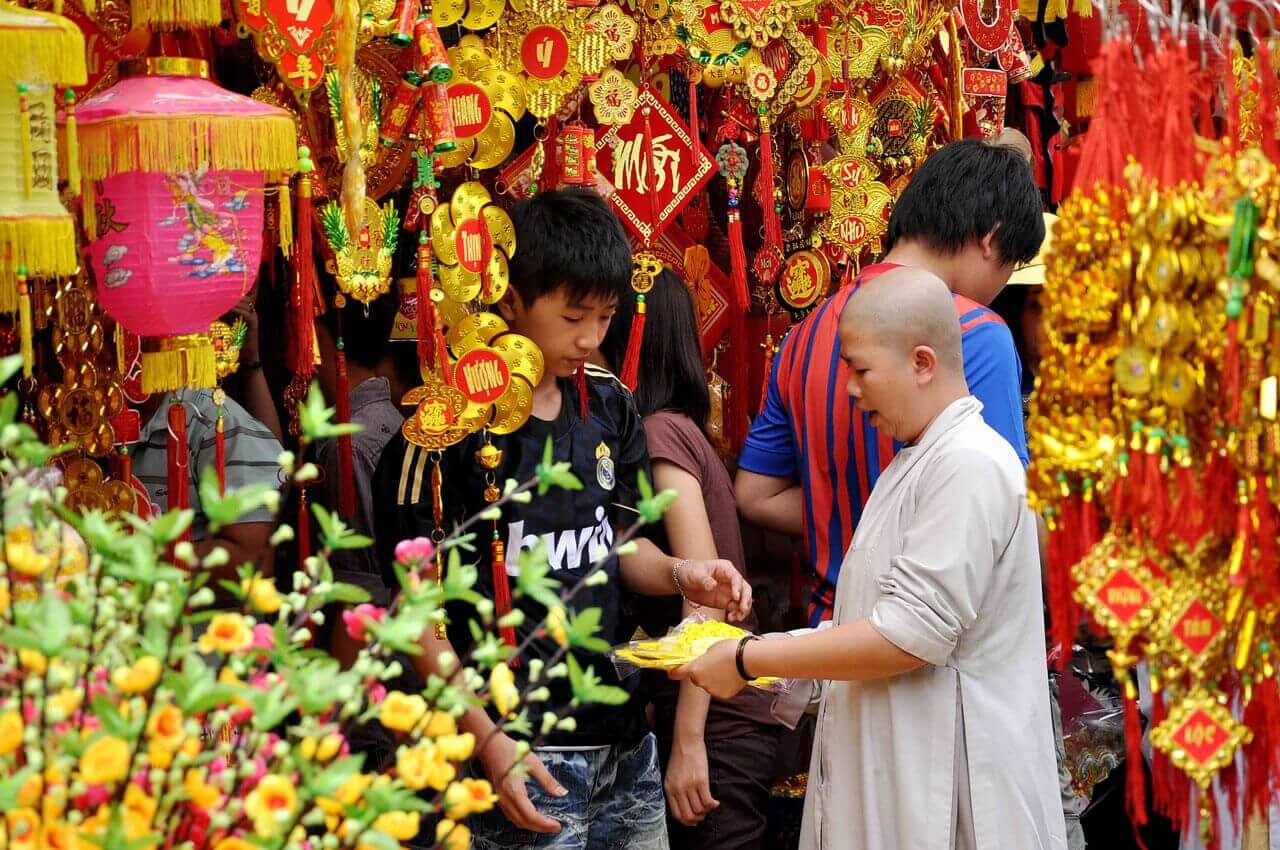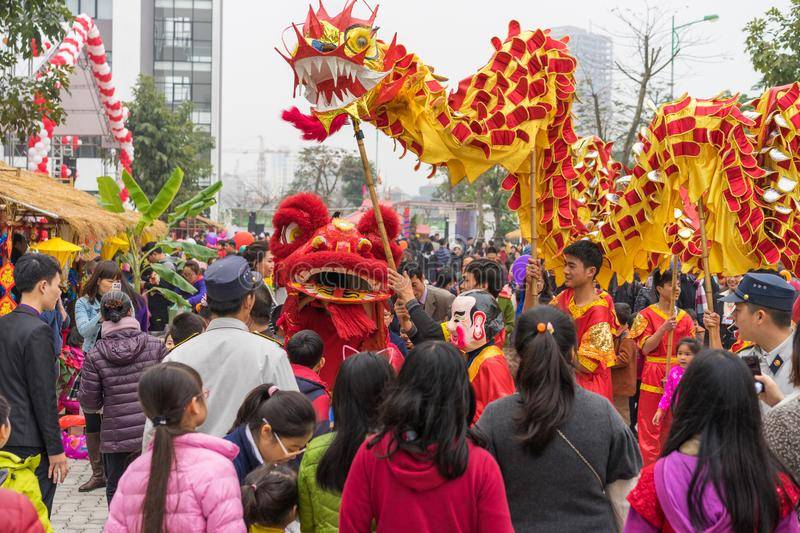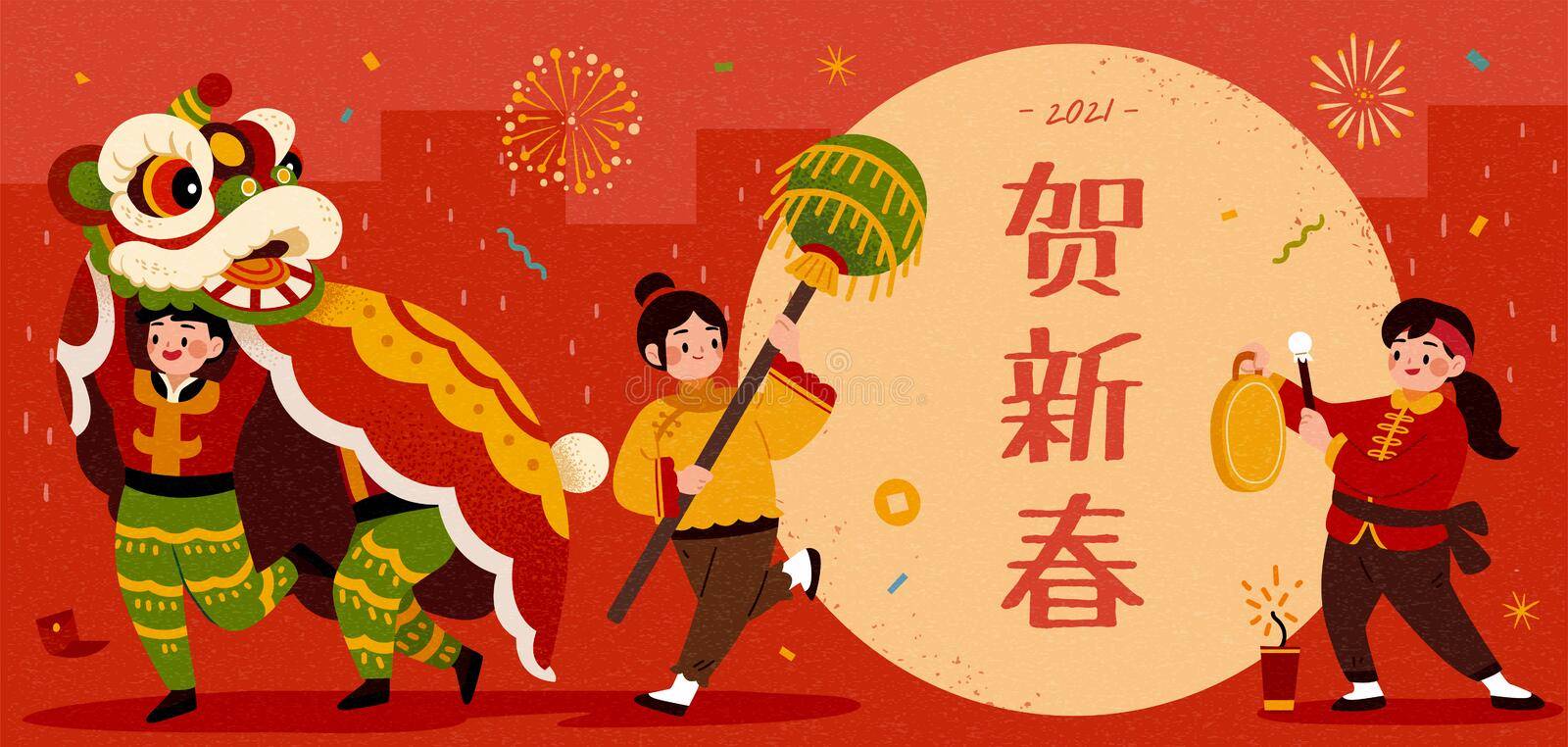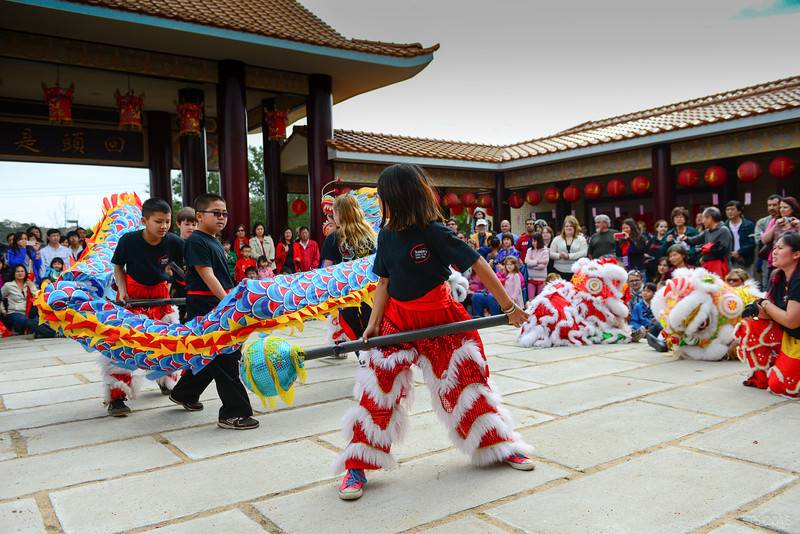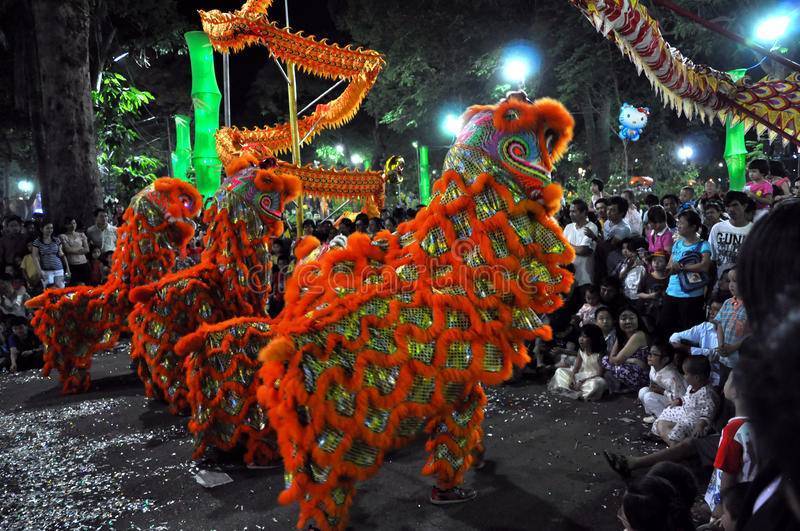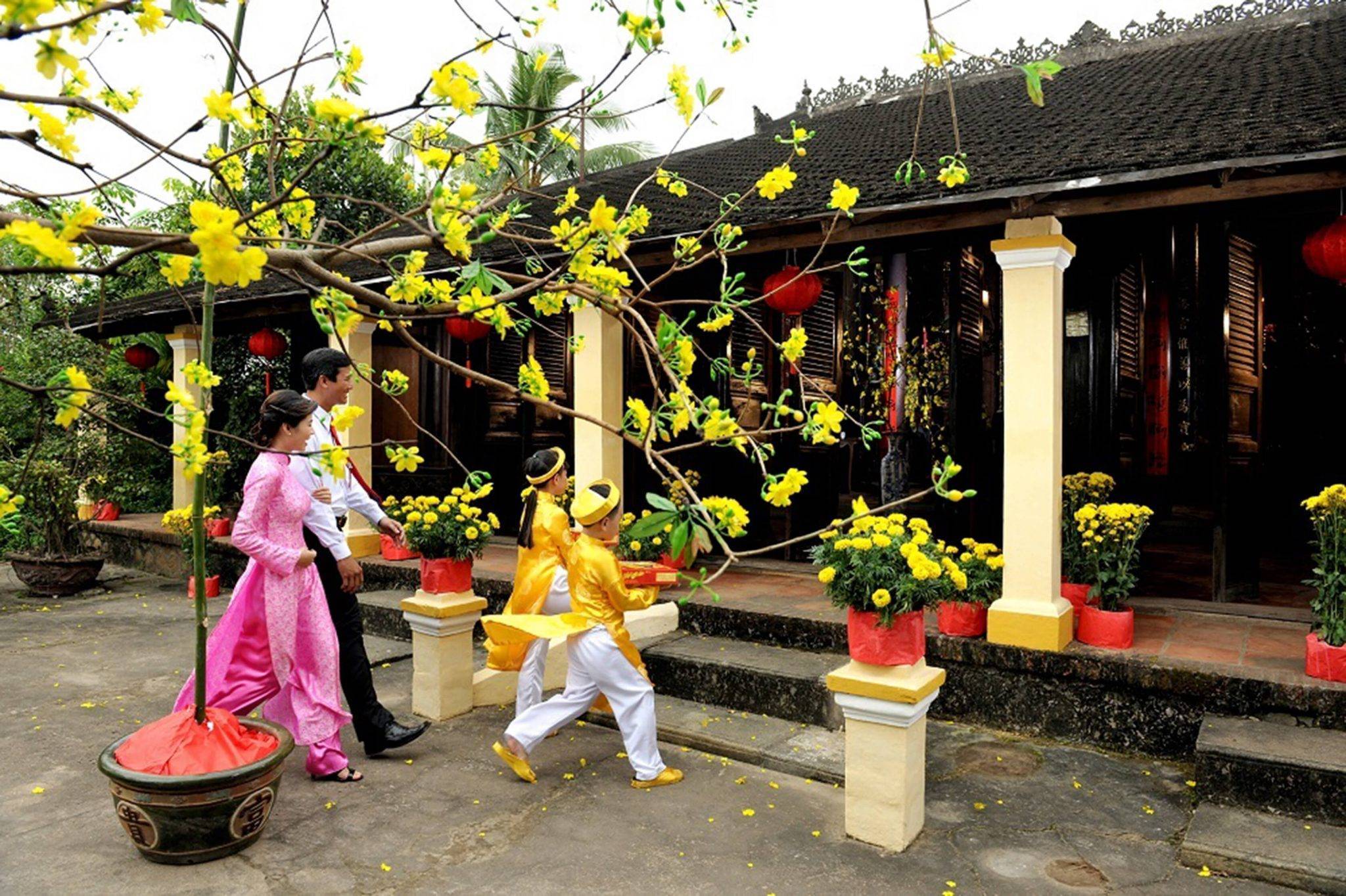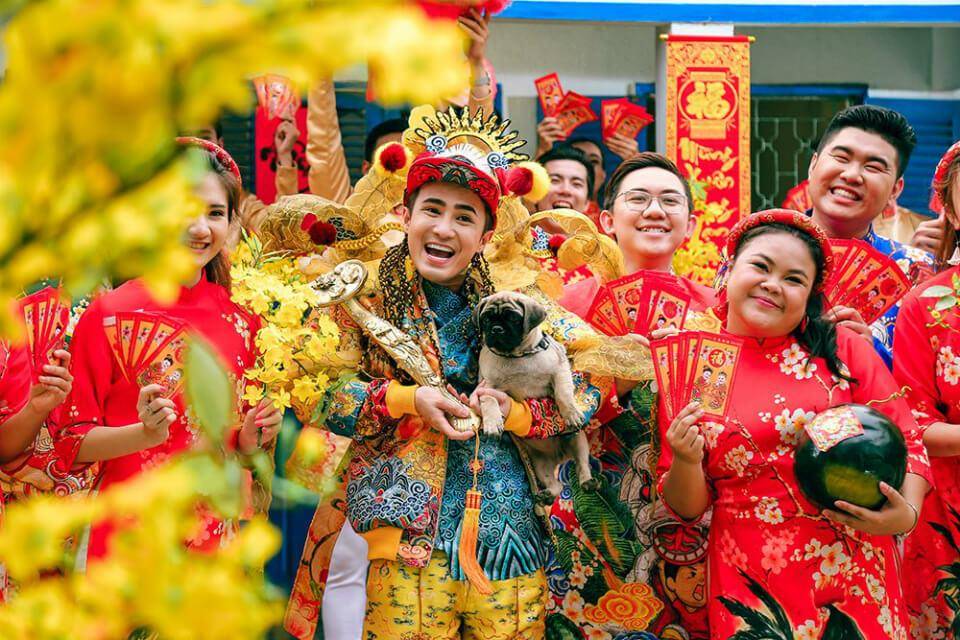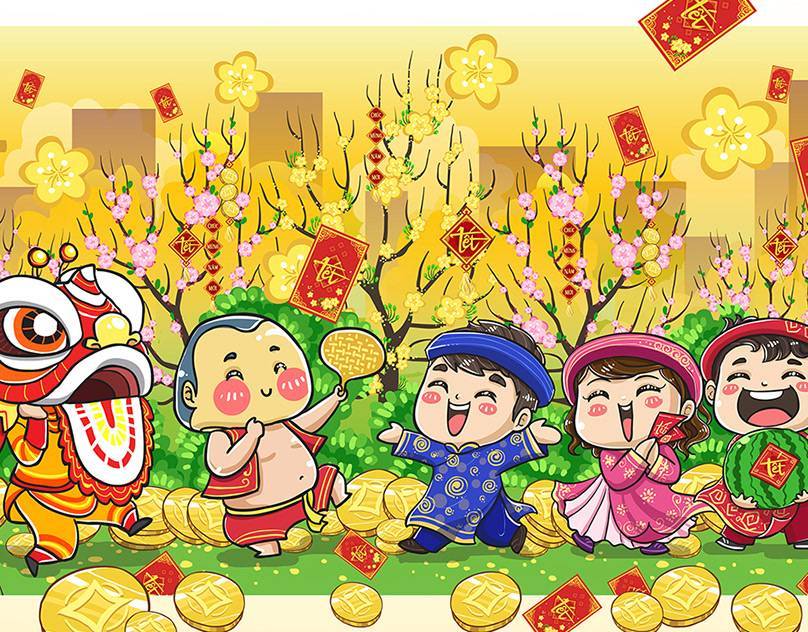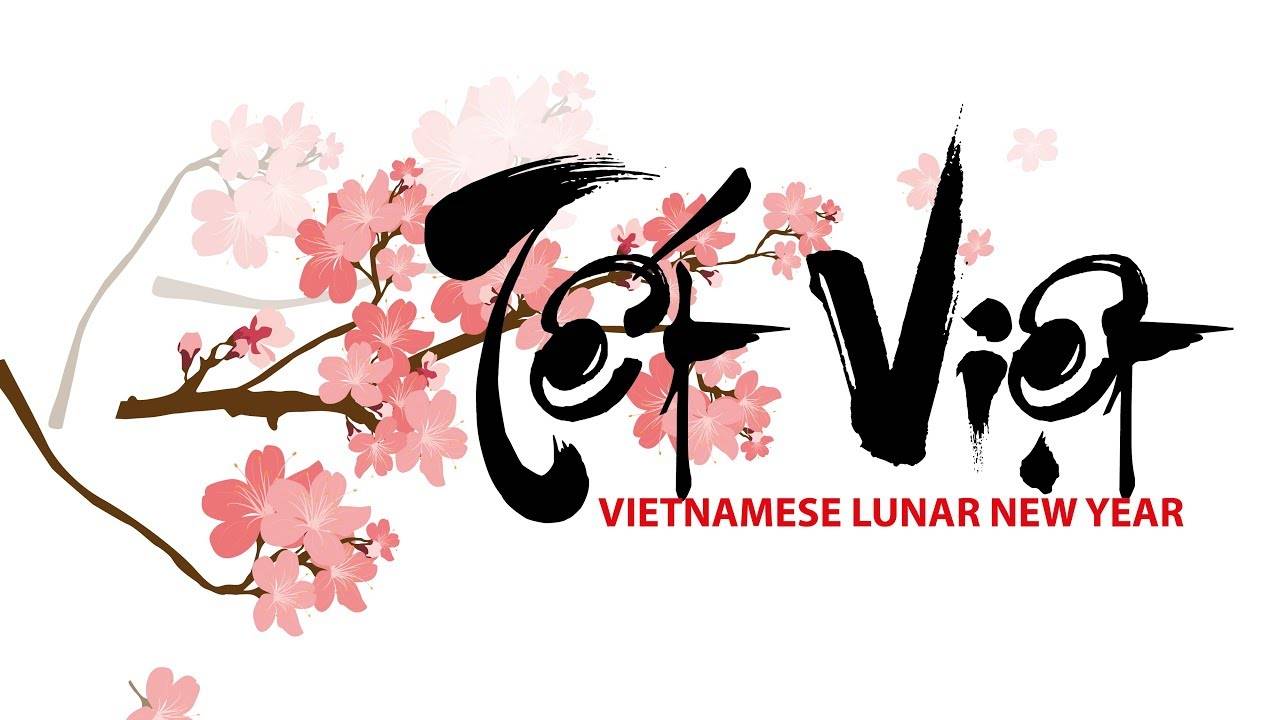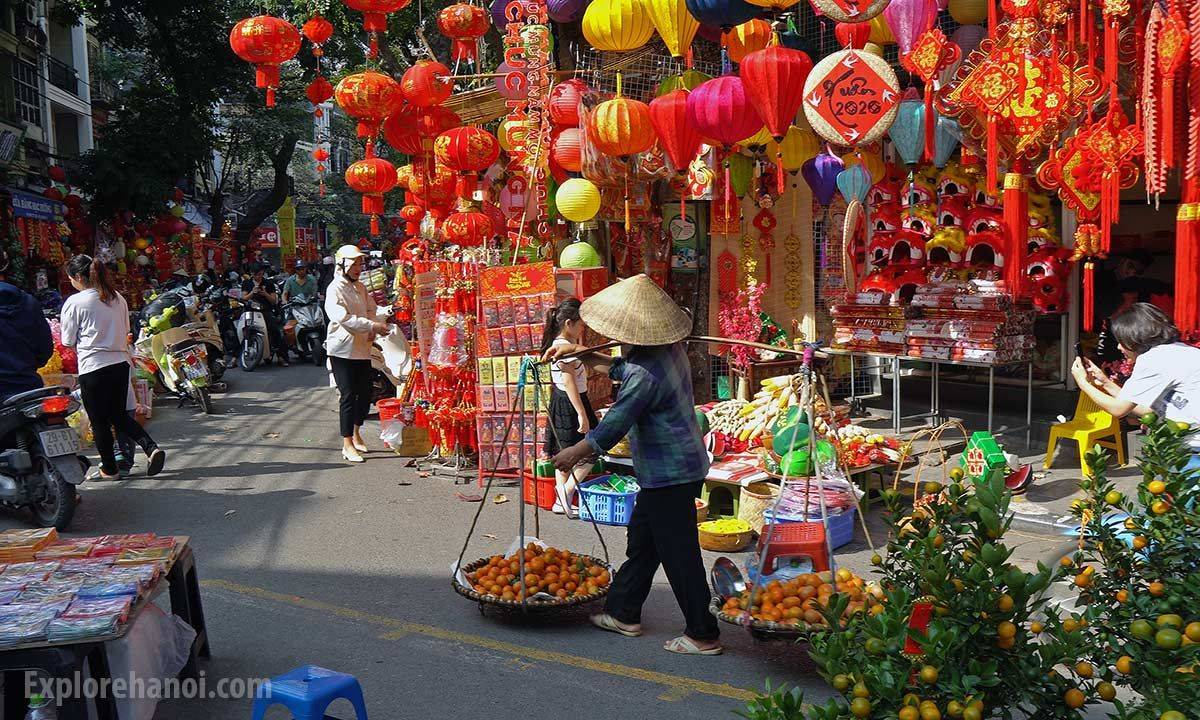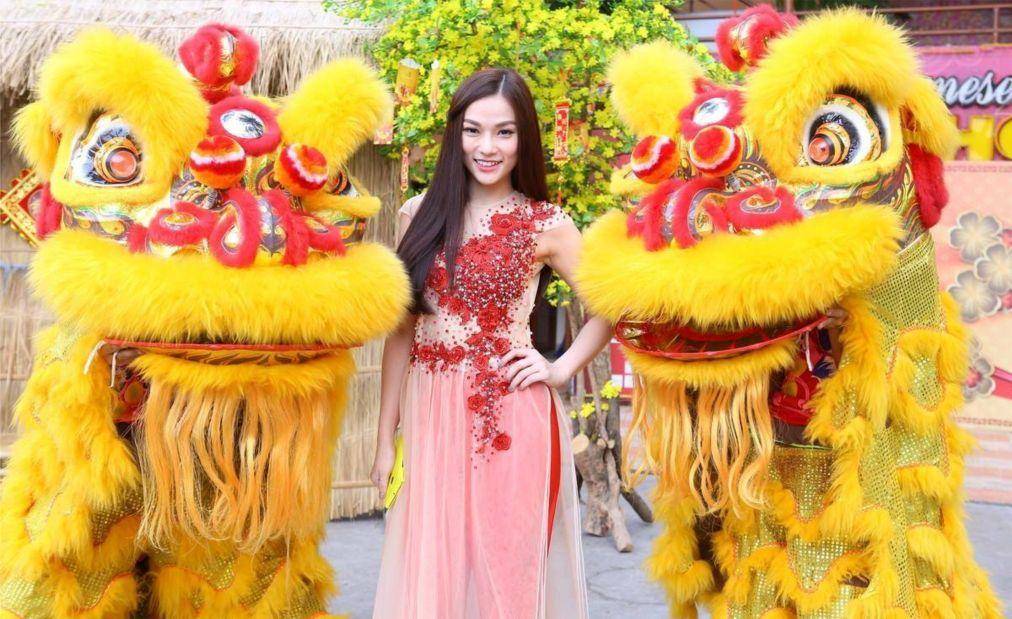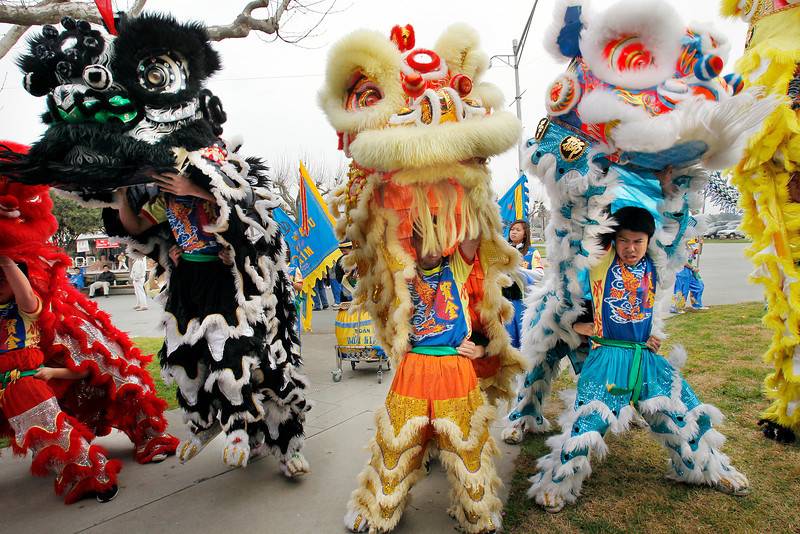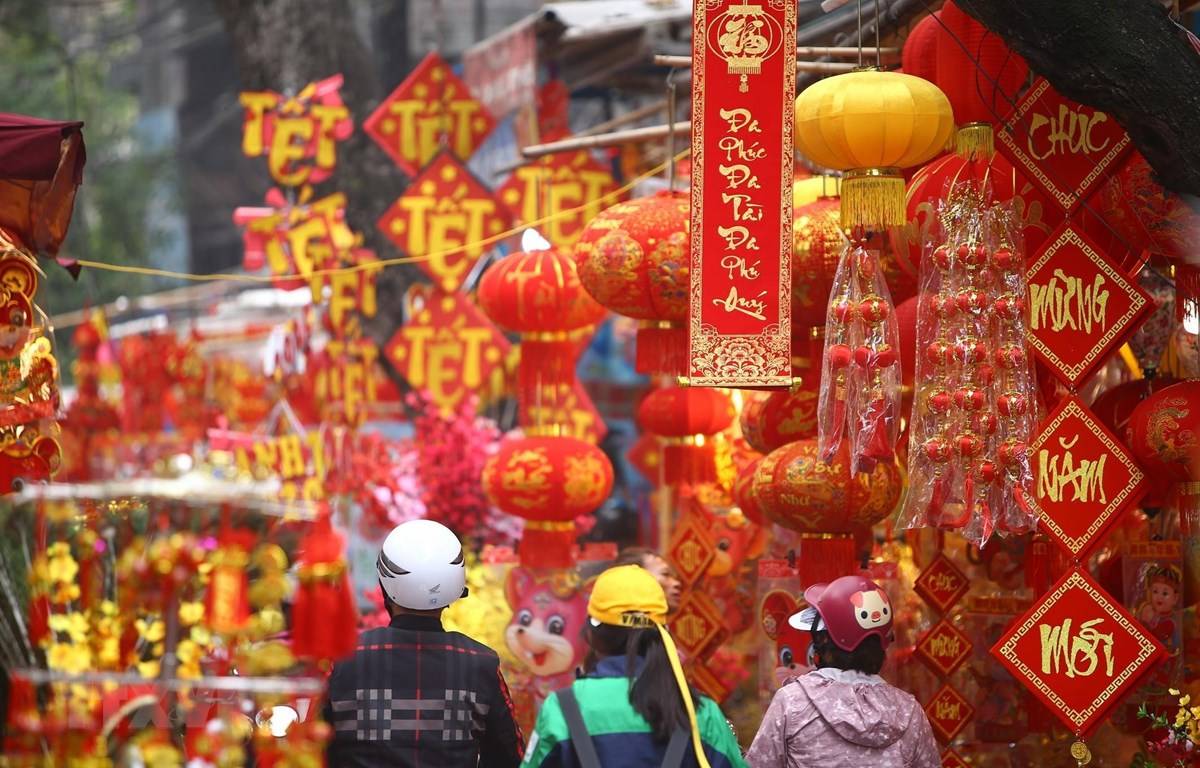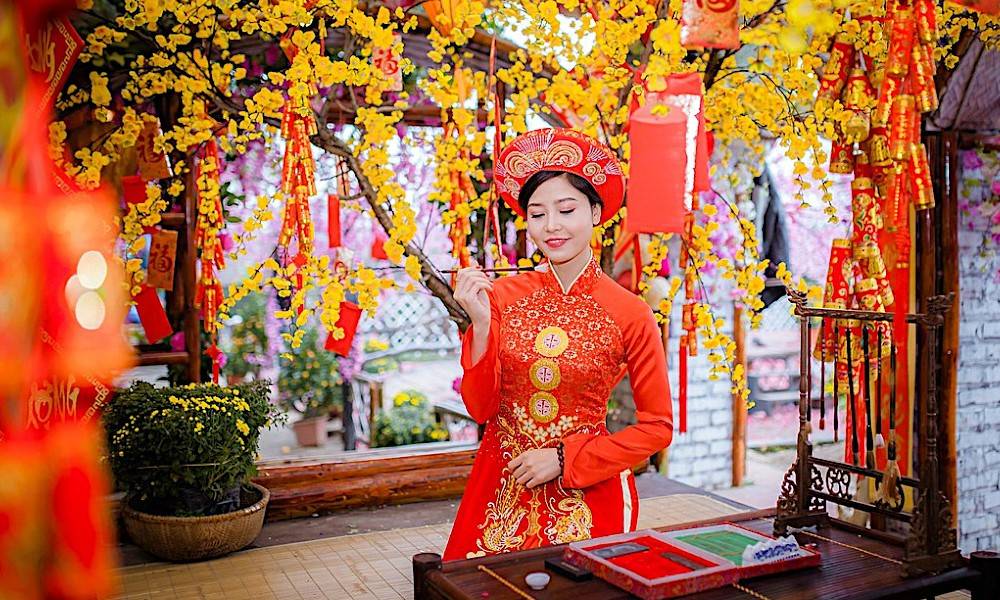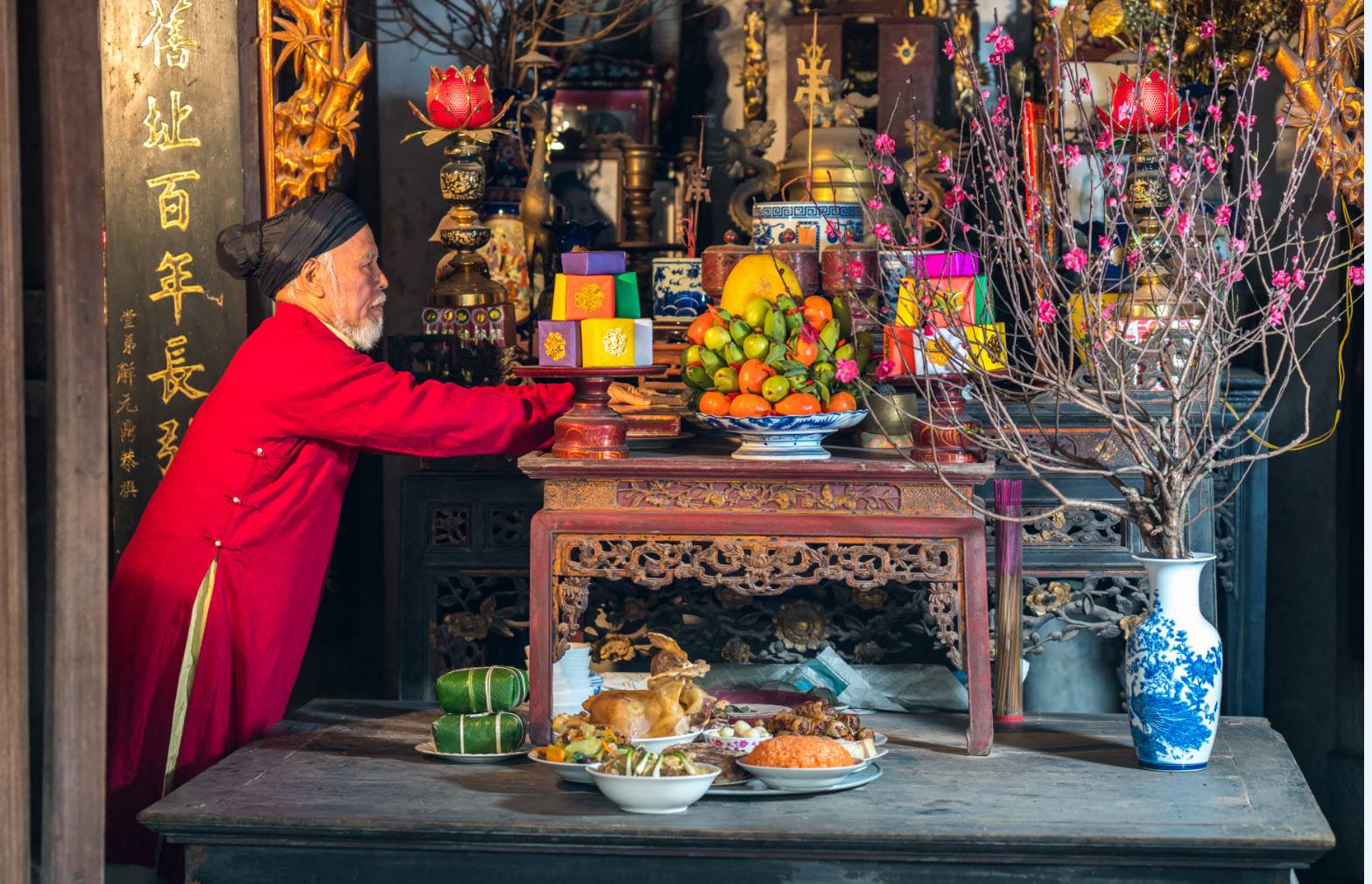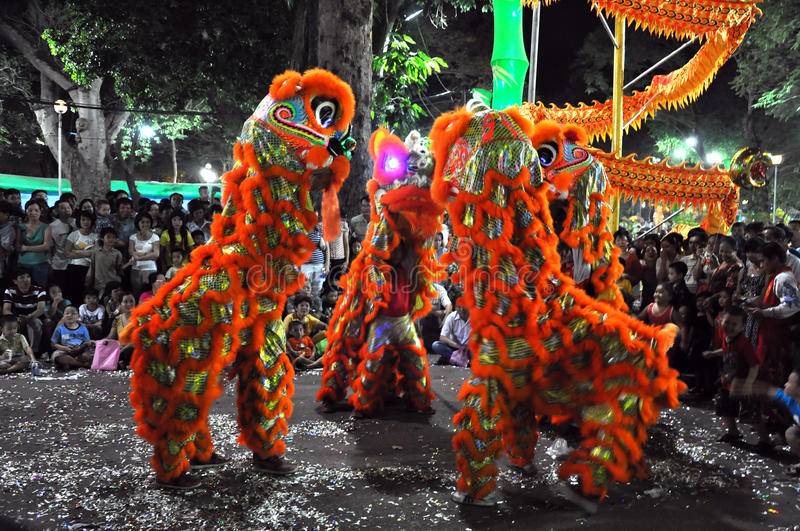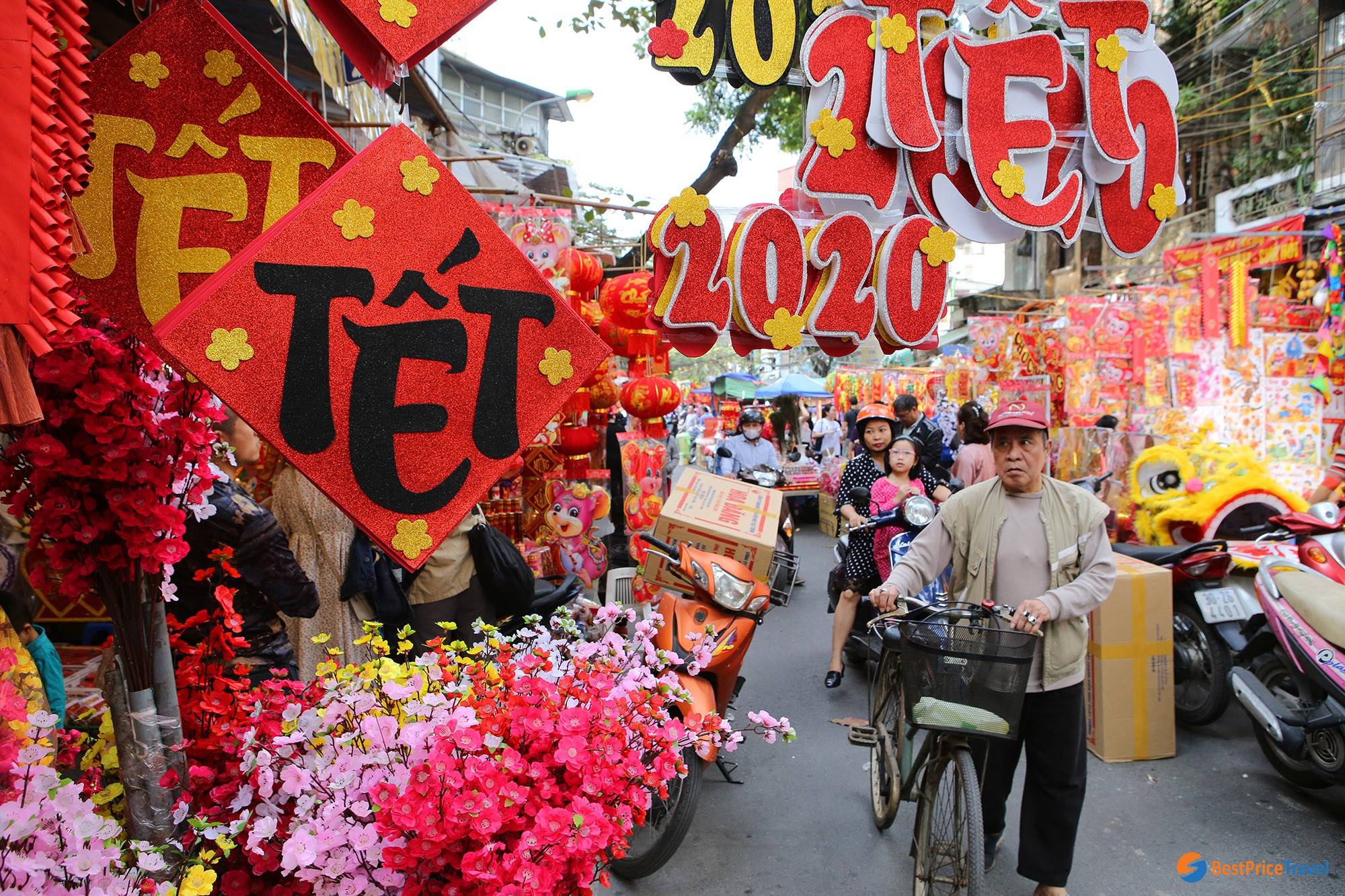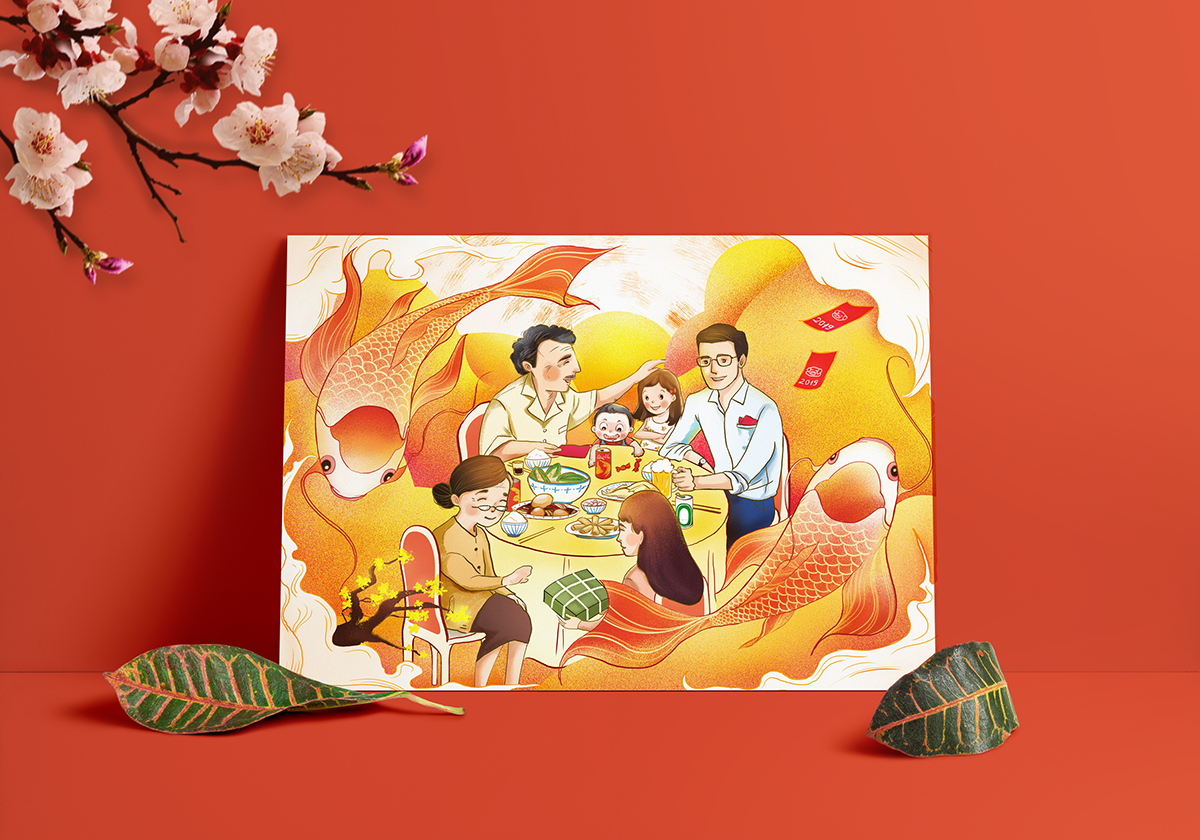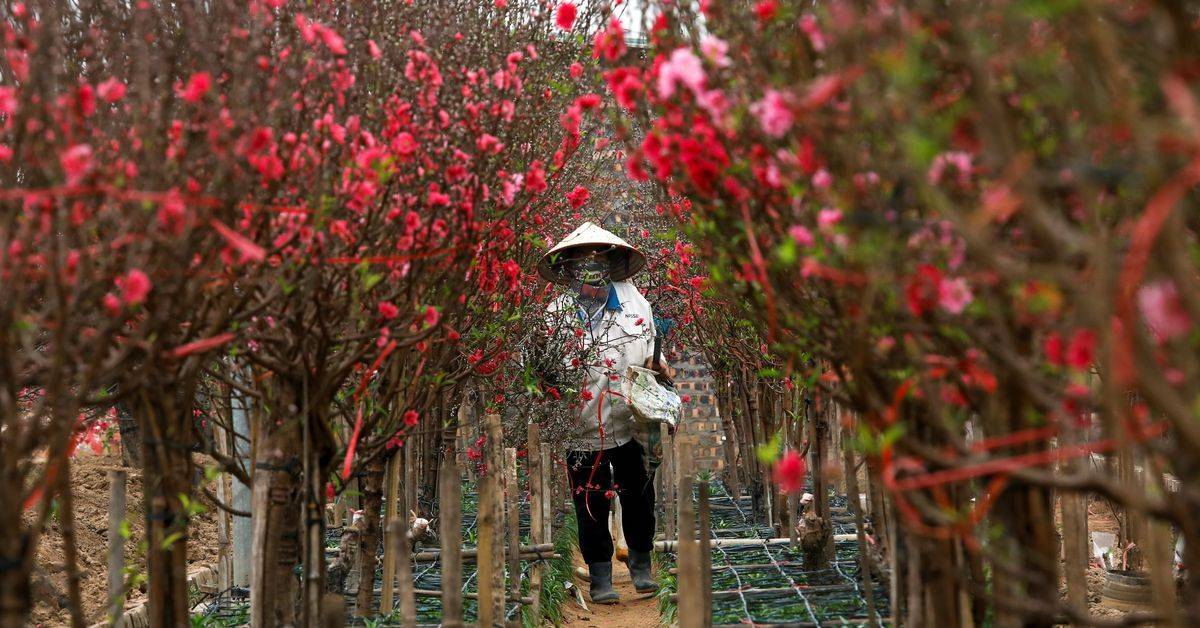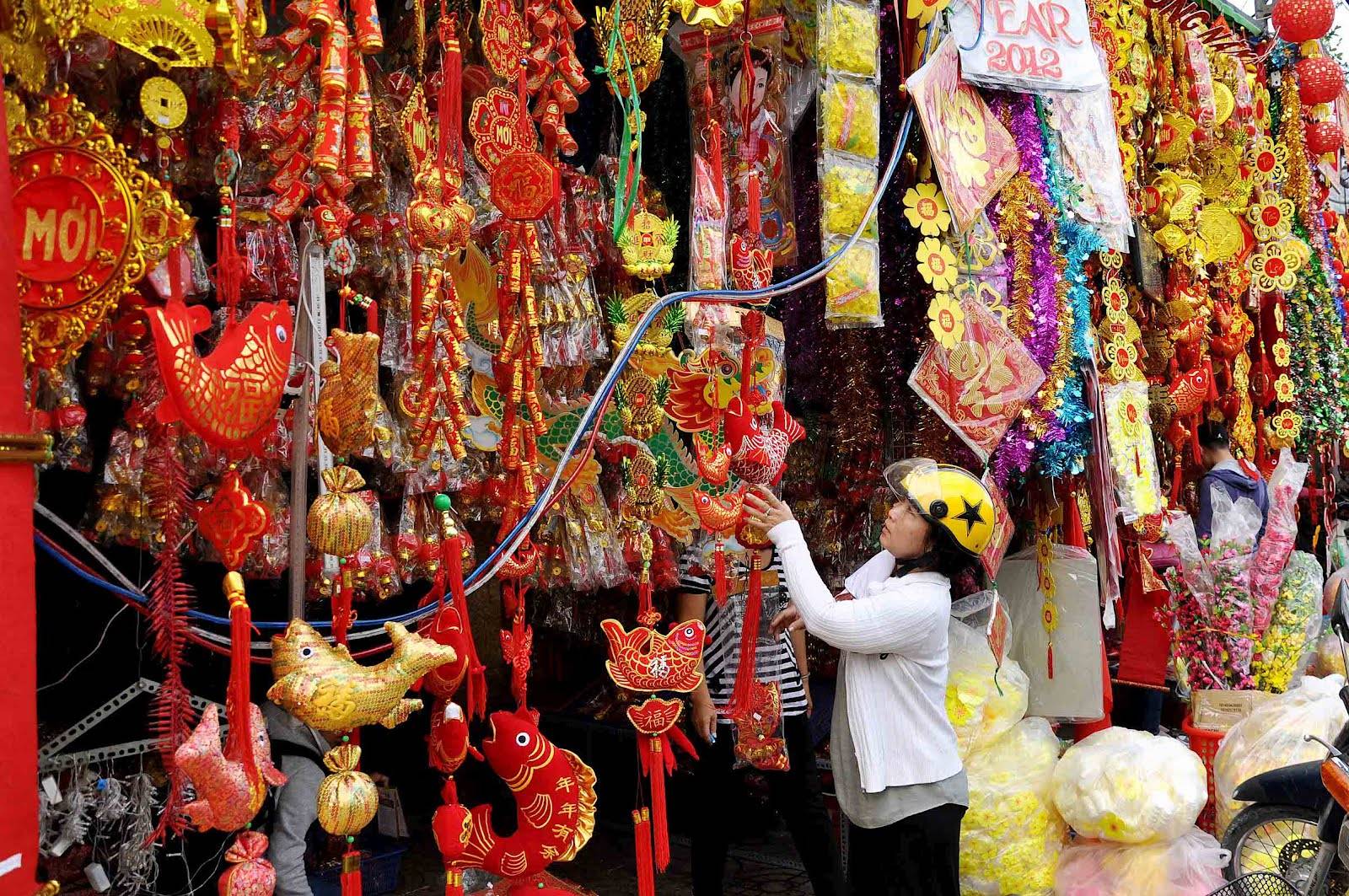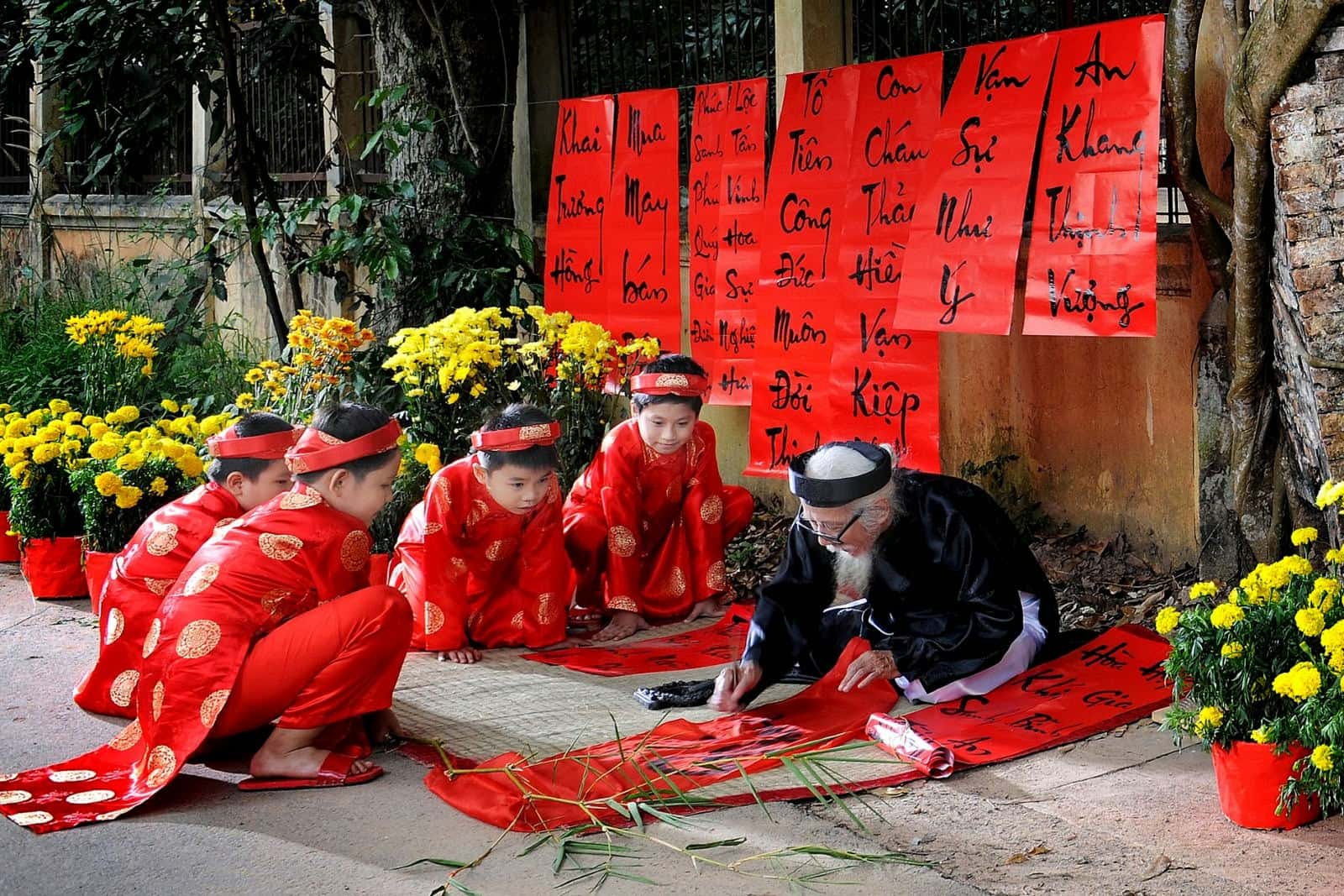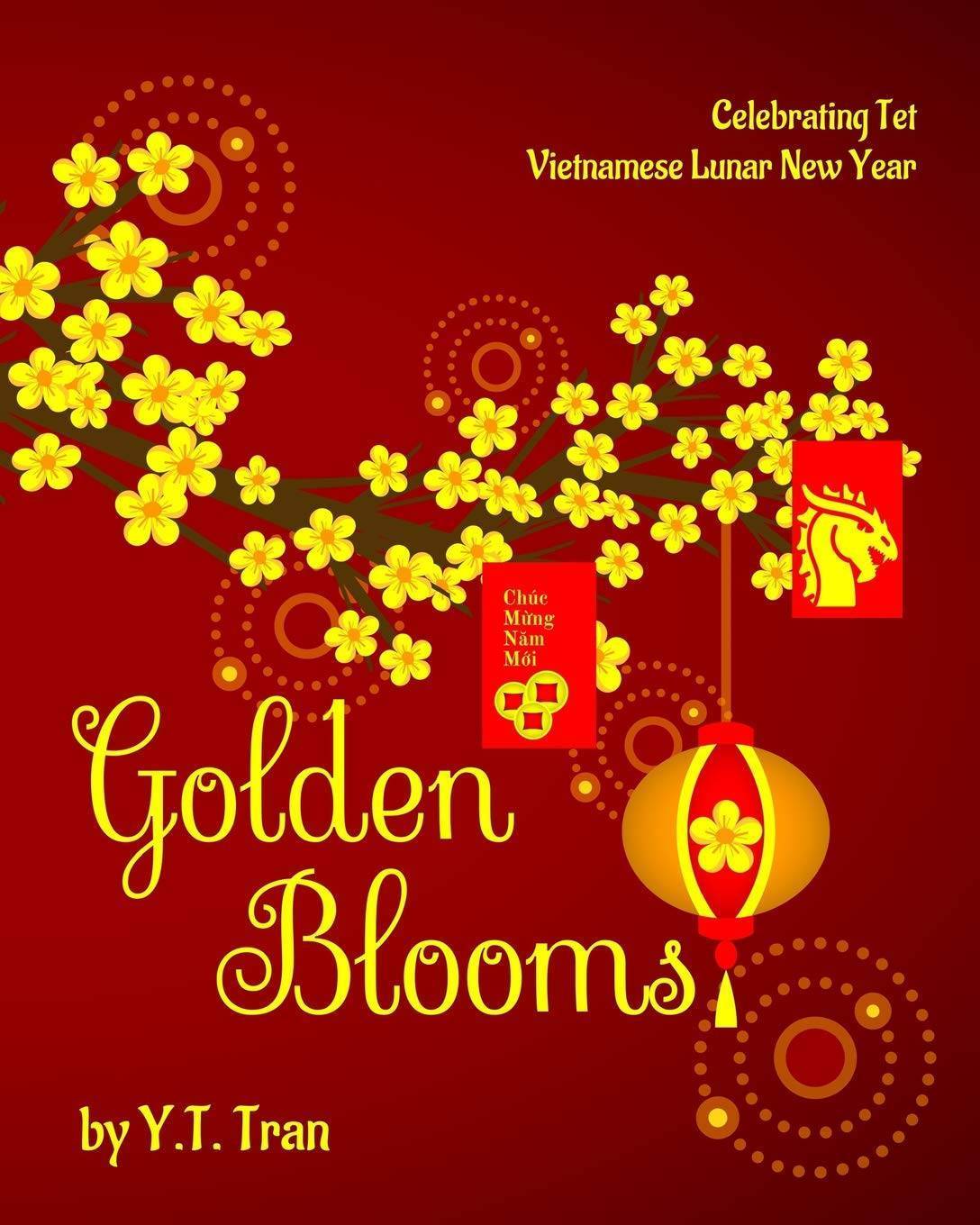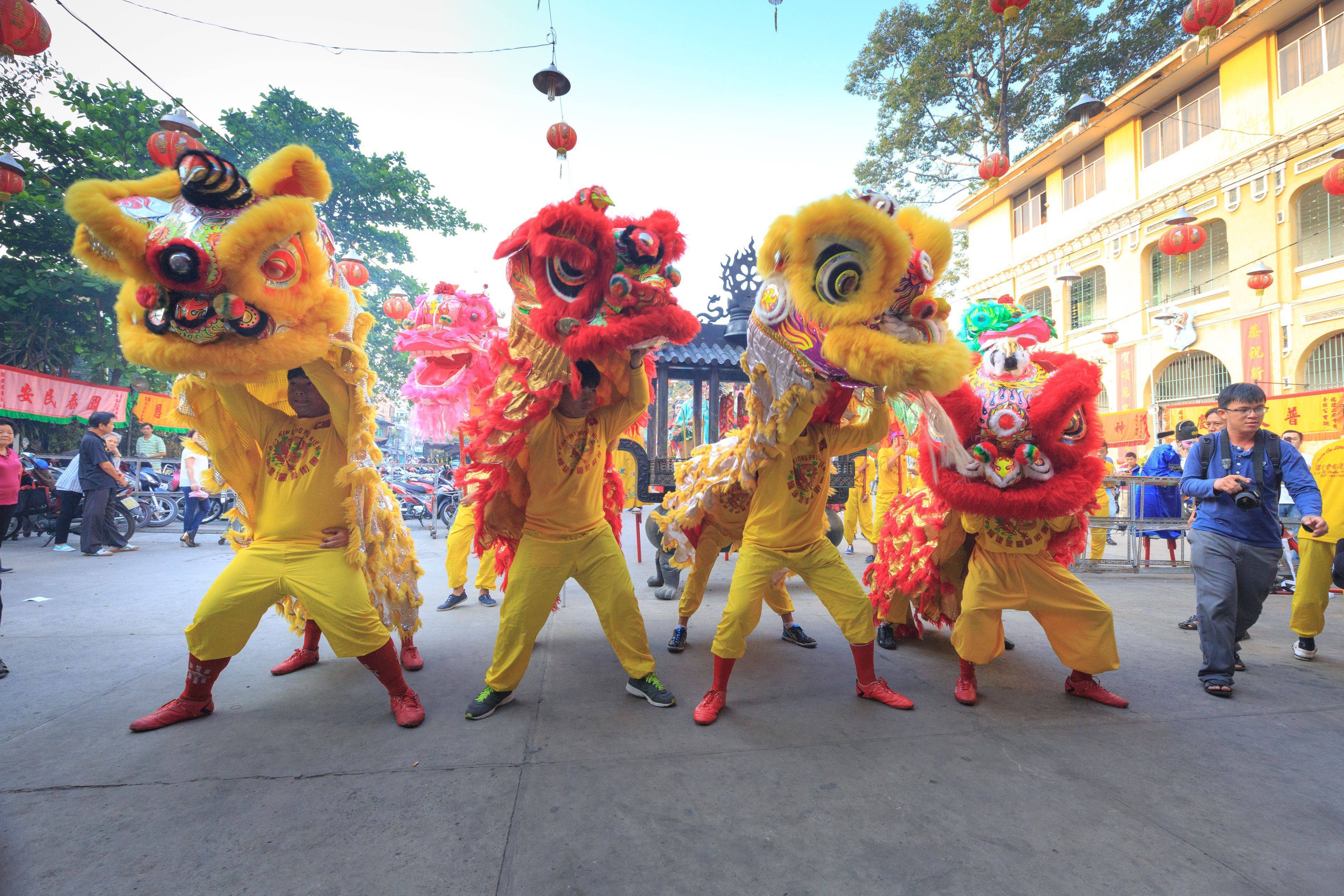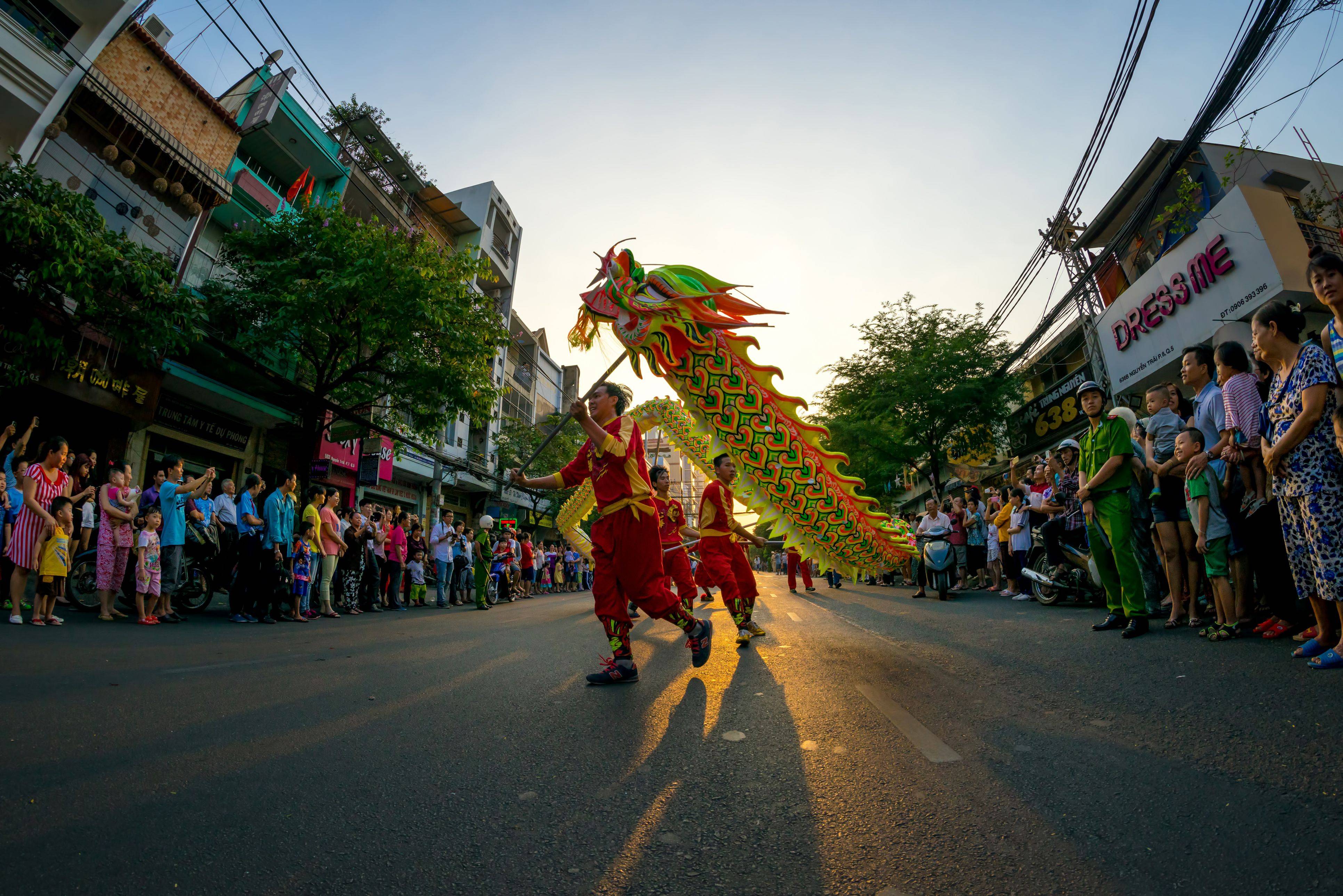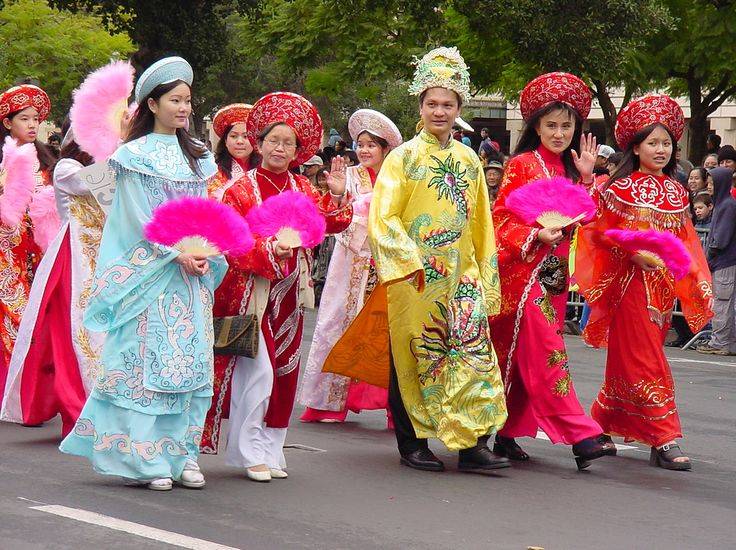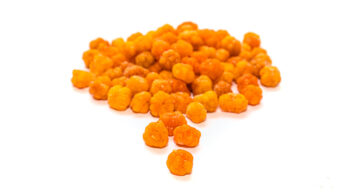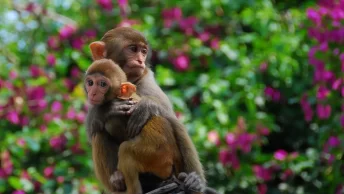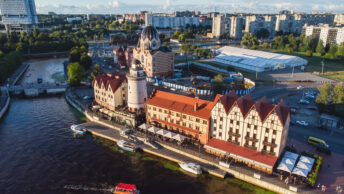Things to do in Ninh Thuan – Eating
Your dining options are fairly limited, but they are also pretty good. Of course Vietnamese style seafood is the main attraction. The Sakaya Restaurant at the Bau Truc Resort is highly recommended. The restaurant is open air and located on the beach, unlike many of the other resort dining options. The food is relatively inexpensive with most dishes being around $4 and a beer costing $1. Stick with the Vietnamese dishes and stay away from their attempts at western food.
If your resort has a large group of loud Vietnamese tourists, then another excellent option is the beach bar at the Saigon Tourist-Ninh Chu Hotel. It is usually very quiet and you can order any of the dishes from the main restaurant.
Phan Rang is also famous for its chicken and rice. The dish is fairly simple, just boiled chicken, rice, and a spicy fish sauce. You can find this dish in many of the local restaurants around Phan Rang.
Buying decorations
Vietnamese people love decorating their houses on the Tet holiday. Lunar New Year is an occasion for members to prepare new items and furniture to welcome a full Tet and a fortune year.

It’s also essential to buy flowers to decorate at home. In the north of Vietnam, Northern Vietnamese usually buy Peach Blossom trees, while people place Ochna trees in their houses in the South.
There are many criteria to evaluate how good an Ochna tree is. People usually assess them based on the number of flowers, the shape of flowers, and the root shape.
“The more beautiful the Ochna tree is, the luckier the family receives on New Year,” – My mom said.
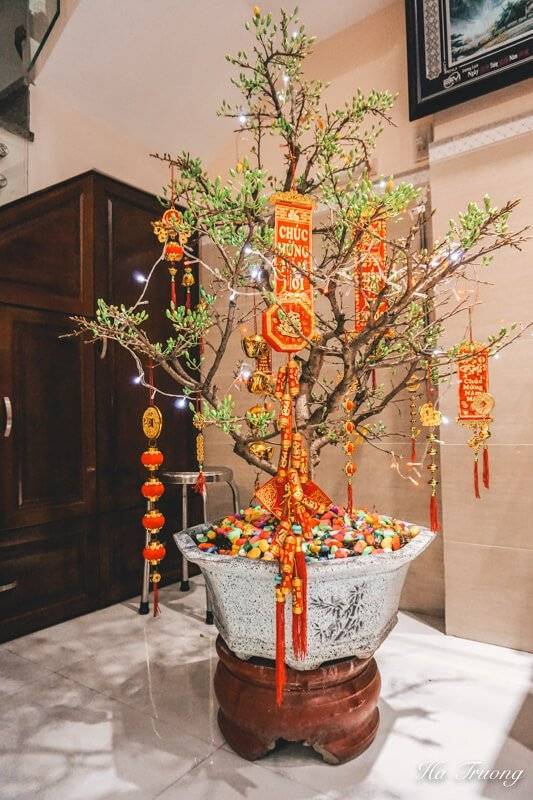
What are the Meanings of the Tet Holiday?
As for the Vietnamese, Tet has many profoundly human cultural values that they have been preserving for a thousand generations. Tet is the expression of the sympathetic relationship between humans, gods, heaven, and earth. Considered from the relationship between humans and Nature, Tet falls at the beginning of a new harvest when the weather gets warmer and plants start budding and blossoming out after a long cold winter. As the result, people assume that Tet is the appropriate occasion to show their commemoration of the Gods like Gods of the Sun, water, earth and thunder, etc involved in a poor or good harvest. This is also a chance for them to express their gratefulness to the plants, cattle, and poultry that helped them for over a year.
Tet is the Day of Reuniting Family Members
When Tet almost comes, wherever you are, whatever you do, people try to come back home to reunite with their family for at least the first 3 days of Tet, visit their relatives, reform the graves of ancestors or burn incense on the ancestral altar, etc.
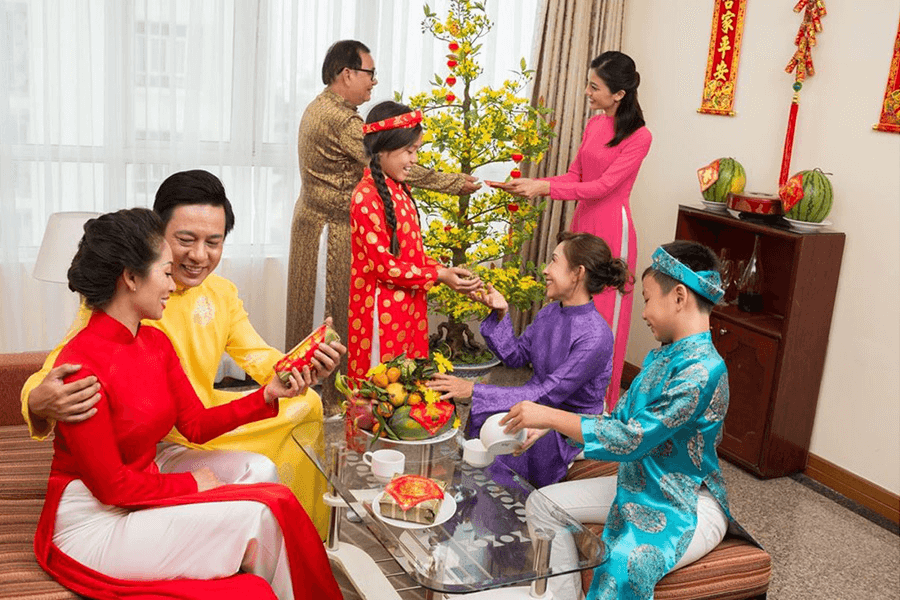
Tet is to Refresh Ourselves
Tet is the first day of the year, therefore, everyone will clean their house, buy new clothes, try to pay off all debts, and forget all the trouble of the past year. Everything must be done to be ready for an upcoming year with good things waiting ahead.
Vietnamese New Year Traditions
Tet is seen as a chance for a fresh start. Debts are settled, and old grievances are forgiven. Houses are cleaned of clutter and decorated with symbolic flowers. Plants get pruned, and drawers are cleared out. All preparations are meant to set the stage for attracting as much luck and good fortune as possible in the upcoming year.
Superstition permeates the air: Whatever happens on the first day of the new year is thought to set the pace for the rest of the year. Sweeping and cutting (including hair and fingernails) are taboo during Tet as no one wants to unknowingly remove incoming good luck!
Although Chinese New Year is observed for 15 days, Tet is typically celebrated for three days with some traditions observed for up to a week. The first day of Tet is usually spent with immediate family, the second day is for visiting friends, and the third day is dedicated to teachers and visiting temples.
One of the most important traditions observed during Tet is the emphasis put on who is the first to enter a house in the new year. The first person brings the luck (good or bad) for the year! Special people (who are considered successful) dear to the family are sometimes invited and given the honor to be the first to enter. If no one is invited, the homeowner leaves and returns a few minutes after midnight just to ensure they are the first to enter the house for the new year.
Because the primary aim is to attract good fortune for the new year, Tet and Chinese New Year share a lot of similar traditions.
Thit Kho Trung: Braised Pork with Eggs: Vietnamese Tet Food
It is a well-known fact that rice is among the main dishes in Vietnamese family meals. Because of this, there is always at least one dish that has a salty, spicy taste which goes well with the rice. On Vietnamese Tet, in Southern Vietnam, that dish would be Thit Kho Trung.
As one of the must-try Tet dishes, one of the “missions” of Thit Kho Trung is to keep the family full during days of Tet when all markets, stores, and restaurants are closed for the holiday. Grandmas and moms usually cook a huge pot of Thit Kho Trung to eat for days. It would be heated up before every meal, and the taste would remain as delicious as when it was freshly cooked.
The ingredients for this dish do not require much. The eggs can be chicken eggs, duck eggs, or quail eggs. For the pork, the belly part is a must. Not only because it is tasty, but also because the fat can provide more energy which is much needed by farmers who have been working hard relentlessly in the fields. Nowadays, agriculture has no longer played a dominant role in the country’s economy as it used to be, but this traditional dish still has a place in Vietnamese people’s hearts. An indispensable ingredient to make the unique flavor for Thit Kho Trung is coconut juice. Thanks to it, the dish comes out with a naturally smooth sweetness.
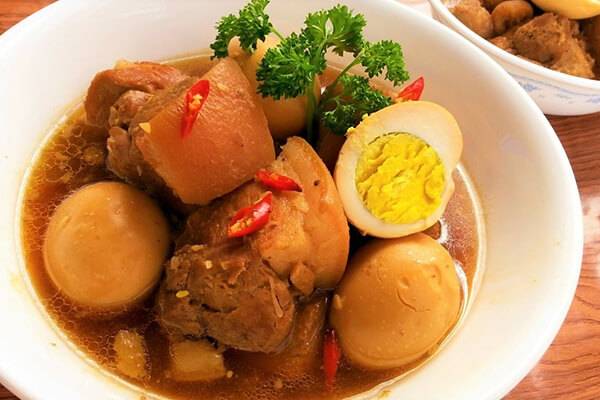 The combination of the ingredients makes Thit Kho Trung mouthwatering
The combination of the ingredients makes Thit Kho Trung mouthwatering
Tet Holiday Cuisine
Banh Chung (Steamed Square Cake)
Known as one of the must-have dishes in a meal of Vietnamese in Tet, “Bánh Chưng” is made from sticky rice, mung bean, green bean, and pork with many different spices and ingredients. Invested by Prince Lang Lieu of the Hung King Dynasty, “Bánh Chưng” represents the Earth with the cover of mung bean in a square shape and the middle of the rice, then mixed green bean and pork. Other traditional dishes Vietnamese eat for Tet are “gio” and “cha”. “Gio” is boiled, otherwise, “cha” is deep-fried. Vietnamese usually eat them with “Banh Chung” or sticky rice.
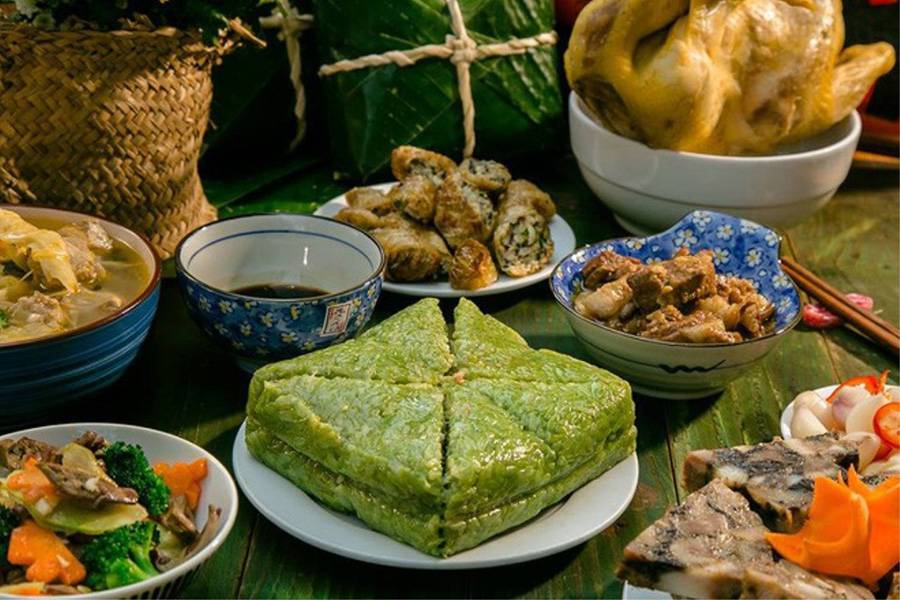
Thit Ga (Boiled or Steamed Chicken)
Nowadays, some families have changed the cooking method of “thịt gà” by roasting or firing it. However, the most common way is still boiling or steaming chicken and then serving it on a plate in the whole or slices. Besides, lemon leaves, salt, and pepper sauce are spices that can be missed when eating this traditional dish. Some parts of chicken include legs, heads, and bones that will be used to cook other food like soups.
Mut (Candied Fruits)
Not be a dish in a meal, “Mứt Tết” is a favorite kind of snack Vietnamese use to greet their guest on this special occasion. This jam can be made from various types of fruits like coconut, carrot, ginger, star fruit, pineapple, or lotus seed, etc. with an eye-catching look and delicious flavor.
Local beliefs to be aware of
Most importantly, don’t visit anyone’s home on the first day of Tet unless you’ve been specifically invited. There is a belief that the very first person to enter a home during Tet can affect the fortunes of that household for the next 12 months.
As a result, locally successful or well-respected people are often given the duty of being the “first caller”. Sometimes, the owner of the house will simply leave their house and re-enter it, just to be the first visitor and avoid any bad luck.
If you are staying with a Vietnamese family and are helping out with the household chores, make sure you don’t do any cleaning or sweeping over Tet. All cleaning should be done the week before, as people don’t want to “sweep away” any good luck during the season itself!
Remember to smile! Tet is a season in which good luck is welcomed, and having negative vibes around, even in the shape of a grumpy face, isn’t wanted by anyone. Be positive with your language and even wear bright colors if you have them.
Each Lunar New Year in Vietnam ushers in a new zodiac year too. 2021 will be the year of the buffalo. These animals are revered in Vietnam, given the role they play in rice farming. Those born in buffalo years are seen as being both patient and hardworking.
European Holidays in Vietnam
Christmas
This date isn’t very important for many people in Vietnam. Only a small group of Catholic celebrate it, and shops’ owners seize the moment to sell gifts.
A large number of Catholic left the country in 1954, after going away of French colonizers. There is Notre Dame Cathedral in Ho Shi Minh, it was built at the end of the XIX century. The building is very beautiful – it is made of pink brick. Christmas is celebrated in this cathedral, and even it is permitted to listen to church music sitting on scooters on the square in front of the building.
During Christmas and Gregorian New Year there are big corporate parties of foreign companies – they are organized for customers. Loud speeches are pronounced in honor of partnership and successful business.
Saint Valentine’s Day
Everybody buys sweets, flowers (roses are the most popular), perfume – and it happens in the country, where work ethic and commitment of the nation are on the first place! Young people, students buy Valentine cards, although the card’s price can be very high, as their daily salary.
The 8th of March
There two women’s holidays in Vietnam – the 8th of March and an official date of October 20. All Vietnamese women get presents from relatives, husbands and friends in these days. There are two women’s museums in Vietnam – they are in Hanoi and in Ho Shi Minh.
This holiday is celebrated just as in Russia: a lot of flowers are being sold and bought everywhere, prices are increasing five times more. But anyway men buy flowers in order to please their ladies.
By the way, in an ordinary day one rose costs 5 000 VND, it’s rather expensive, but the bouquet will be awful… If you want to buy a beautiful bouquet, you can write or call our friends – Art Bouquet (Instagram).
Top 5 things to do in Nha Trang
The weekend is one day away so if you are heading to Nha Trang, we have listed 5 things to do in Nha Trang. Nha Trang is known for it’s beaches and scuba diving sites and is a popular destination for both local and international tourists. While high rise hotels span the length of the main beach, the city still retains some of it’s local charm and if you are willing to head out of town, there are a few unspoilt beaches to be visit. While we’ve written in length about Nha Trang in our Discover Vietnam post, we’ve listed our top 5 things to do at the beach destination.
3. Get your PADI
The scuba diving is world-class and there are many different schools to choose from in the city. Just make sure you use a PADI certified school.
4. Go diving
There are over 350 different species of coral and other marine life in the ocean off Nha Trang. So when you get your PADI, rent a boat and go diving!Local insight: Hon Mieu island’s clear water makes it a favourite for snorkellers and scuba divers alike.
5. See the sleeping Buddha
Located in Long Son Pagoda, this 80 metre long sleeping Buddha is one of the largest in the world. Inscriptions of the teachings of the lord Buddha dots the walls of the pagoda.Local insight: Make sure to take the 150 step staircase to the top. Stunning views of Nha Trang are your reward.
Have a great weekend and enjoy our 5 things to do in Nha Trang!
Other articles:
Extra tips if you are traveling or staying in Vietnam during Tet Holiday
DO:
- Say “Chuc Mung Nam Moi”, means “Happy New Year” when you meet someone.
- Give people good wishes.
- Give lucky money in the red envelopes (Li Xi) to those in close relationship, or offer some gifts related to luck.
- Smile, laugh often, and be energetic.
- Dress bright-colored clothes.
DON’T:
- Don’t show up at somebody’s house on the 1st day of the Lunar New Year unless you have been invited by the owner first.
- Don’t give presents with unlucky signs.
- Don’t ask for “Li Xi” if it was not given.
- Don’t use unlucky words.
- Don’t talk about negative topics such as debt or loan, accidents, deaths, or funerals.
- Don’t hurt or kills something.
- Don’t break objects in somebody’s house.
- Don’t wear dark clothing or just black and just white.
- Don’t take water and/ or fire away from Vietnamese houses.
- Avoid demanding requests during Tet.
If you plan to visit Vietnam during the Lunar New Year, early reservation is highly recommended as flight and train tickets are often fully booked, restaurants are closed, tour guides are also… off despite salary is double to triple paid! Ask our Vietnam Travel consultants for more details!
Enjoy 3 days of the lunar new year in Vietnam
The first day of the lunar new year is considered as the most important day of the year.
Most Vietnamese people believe if the first day of the year is good, they will have an easy year.
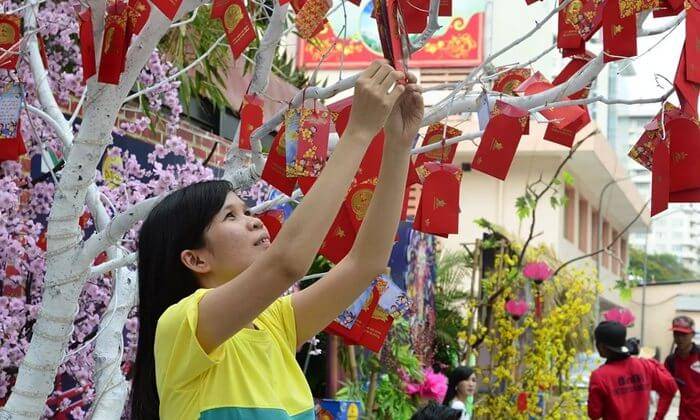 Welcome the lunar new year | loilamtan/pixabay
Welcome the lunar new year | loilamtan/pixabay
Thus, the first person who comes to the house is really crucial for the owners, calling “Xông đất” – warming up the house. A family would like to choose and invite an active person with the best zodiac animal suitable for the owner.
Usually, the host invites a relative or friend to come to the house as the first guest to carry good luck for the family. On other hand, the owner has to prepare lucky money to give to the first VIP who will bring good luck in the new year.
Besides, on the first day of the lunar new year, children wear new clothes and “Chúc Tết” – saying greetings of Tết to the elders. Then, their parents and grandparents give them lucky money in the red envelopes to wish all things fabulous.
After those activities, they can go out together visiting other relatives, or coming to the pagodas to pray for good luck for the year.
On the second day of the lunar new year, most people come back family and relatives of the wife (if they are close together), calling Tết Mẹ or Tết Ngoại.
During the second day, the Vietnamese people also visit neighbors. And you can join a lot of parties with plenty of food and beers.
>>> Please see the popular beer brands in Vietnam.
The third day of Tet is the time to come to see friends and teachers.
The students often visit the old teachers to show their respect because many people live afar away, so Tet is time they come hometown. (In Vietnam, another special day for the teachers is the 20th November – The Vietnamese Teacher’s Day).
Then, people meet old friends and enjoy the party or go to a beautiful landscape to share time together.
The third day is also time to worship to end Tet, calling Lễ Tạ – meaning stopping Tết.
The owner caries most of the food left to a table in front of the altar, also including a few raw rice and money, to ask for the best fortunes. A lot of wishes!!!
Conclusion
Tết – the traditional Vietnamese lunar new year is the mark to begin the series of festival organizing along with the country.
The people will live in the vital tradition of the community and show respect together when all people living far away want to come back to their hometowns.
Everyone opens parties, Vietnamese games, and exciting chats together. All of these activities help people relax, reduce stress after working hard for a year.
Also, it is time to wish the gods and deities give a fortune, good lucks, happiness, and prosperity.
Tet, one of the official holidays in Vietnam, is also the time of family reunion. All members can stand in front of the ancestor altar to show respect to the previous generations and can live gain on the homeland.
The traditional lunar new year in Vietnam is the festival of living people and their ancestors, creating a unique meeting of different generations.
History of Vietnamese New Year (Tết Nguyên Đán)
In Vietnamese, Tết Nguyên Đán roughly translates into English as “the first morning of the first day.” It is a celebration that has been celebrated for thousands of years. Its roots can be traced all the way back to the Chinese, who brought this lunar New Year holiday to Vietnam. The Chinese lunar New Year was celebrated in China for over 2,000 years. It is believed that the Chinese brought this holiday to Vietnam around the 40 A.D. Many of the traditions of the Chinese New Year were also incorporated into Tết Nguyên Đán.
However, the Vietnamese calendar isn’t exactly the same as the Chinese calendar. The Chinese calendar is based purely on astronomical observations, and as a result is dependent on the local time of where it is used. In 1967, North Vietnam switch from UTC+7 (from the previous UTC+8) and South Vietnam did the same in 1975. This means that in 1968, North Vietnam and South Vietnam celebrated the Vietnamese New Year on separate days. Vietnam’s and China’s zodiac systems are different as well. The Vietnamese zodiac replaces the Ox with the Buffalo, the Sheep with the Goat and the Rabbit with the Cat. The rest of the animals on the Vietnamese zodiac, however, remained the same.
Tet. The Events, Family and Local Customs
Tet is the abbreviation of Tet Nguyen Dan and is meant to mark the end of winter and the arrival of spring. The idea is that you forget about the troubles from the year that has just gone by and focus on a new and positive upcoming year.
To celebrate, the country develops a New Year’s Eve type of atmosphere. Cities like HCM, Hanoi, and Da Nang during Tet will organize fireworks displays. Its all part of the Vietnamese New Year superstitions and traditions that have occurred for centuries. This new year, new opportunity mindset gives people the confidence that the past has cleared away any negativity and the future is open to new and positive outcomes.
You might see less obvious traditions like;
- Wind chimes atop bamboo sticks that jangle in the wind to ward off evil spirits.
- Lanterns hung in doorways to welcome home ancient ancestors.
- Firecrackers and gong-banging to scare away negative energy.
- Red Couplets that look like red banners with Chinese writing handing from buildings.
- Special flowers like marigolds, daisies, lilies or special additions like peach or apricot braches that are placed in the home.
- The cleaning of homes, especially the kitchen, to appease the watchful Gods whom keep an eye on the family throughout the year.
- Special ceremonies between the elders and the ancestors where the offering of food and incense are given.
- Special guests invited to be the first to enter the home on New Year’s day. It’s believed the first person in the door can set the mood for the entire year.
Many Vietnamese prepare for the Tet Holiday by cooking traditional food like spring rolls, Banh Chung/Banh Tet, a special cake made from rice mung bean and pork. Xoi or Gio Cha, . Thit ga, a boiled chicken, as well as a number of other delicious holiday foods.
This and many other customs take place during Tet, including visiting a person’s house on the first day of the new year, wishing New Year’s greetings and blessings, giving “lucky money” to children and elderly people, or opening a new business. Overall it’s a time for new beginnings.

A look at some of the Dragon Dancers that can be seen roaming the streets during the Tet holiday.
Decorations at Tet Holiday in Vietnam
Depending on which region you are staying in. If you live in North Vietnam, some peach blossom trees, kumquat trees, and orange trees are these must-have things in Tet. But you are a Saigonian, apricot flower will replace for peach blossom trees. In the north or central Vietnam, the kumquat tree is a popular decoration for the living room during Tet. Its fruits symbolize the fertility and fruitfulness that the family hopes for in the new year. They plant these flowers and put them into beautiful pots in front of or inside the house.
Above all, time to Tet is counting down, so if you want to experience this extremely special event at least once in your life, just pack up your luggage and reserve a Lunar New Year trip in Vietnam!
Experiencing Tet in the best way
Despite it being a difficult and more expensive time to travel, Tet allows you to experience the spirit of Vietnam at its best. Everyone is in a good mood, and people are even more polite than usual. There is a joyous, charged atmosphere that is full of excitement. It’ll be a cultural experience you’ll never forget. Hopefully, all this joy and love from the people will counter-act your travel frustrations in case you weren’t prepared for this holiday.
We have some good news for you! You already know more than most of the tourists after you read the tips above. This will save you from lots of frustrations, but keep reading, when you want to experience Tet to the fullest and learn why this national holiday is so important to Vietnamese.
See here a video of the festivities in Hoi An at New Year’s Eve in the Old Quarter:
Clean the house and ancestor altar
Cleaning the house and ancestor altar is a required tradition for all Vietnamese people to have a good and lucky year.
Washing houses in Vietnam as well as decorating them also means pushing the bad things going away from the family, creating a chance to achieve good luck in the next year.
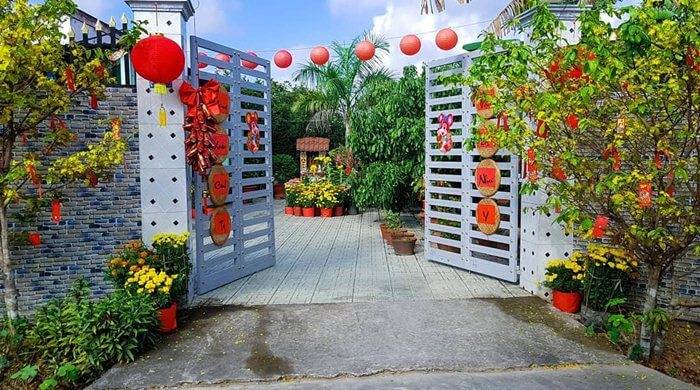 Decorate the house to welcome Tet. | @___cindy.ngo___
Decorate the house to welcome Tet. | @___cindy.ngo___
Floors – doors – windows – beds – ceilings must be cleaned carefully, ensuring no dust and no spider nets still stay in the house.
Besides that, cleaning the ancestor altar can be allowed to do during this time, usually from 22nd to 26th of the last lunar month.
Typically, the Vietnamese people avoid touching the ancestors’ incense urns all year round. Thus, they just have a chance to wipe and take the incense-stick roots out of the urns when preparing for the new year.
Cleaning the altar belongs to the spiritual culture. Thus, the man of the family will do this work, and noticeably, to avoid breaking incense urns.
- The work begins with taking all things from the altar unless the urns, clean the surface of the altar.
- Clean or wash the dust from worshipping objects.
- Take the incense roots out of the urns, and keep at least one, usually three sticks.
- Change the sand inside the urns as well.
The sand must come from a clean area, quite nice. So, you can find many people selling sand in the markets in Vietnam before Tet for this purpose.
After all, put everything back on the altar. Do not change any sites of worshipping objects. The significant work is done!
Traditional Tet food
Like most festivals, food forms an important part of the Vietnamese Lunar New Year. Tet comes with its own special menu, and families will do a lot of cooking in the build-up to Tet. If you’re lucky, you may get invited by your Vietnamese host to try some of the following lip-smacking delicacies!
Sticky rice cakes
Image by Nha Hoang from Pixabay
Known locally as banh chung, you’ll see sticky rice cakes wrapped in banana leaves. They’re made of rice and mung beans, sometimes with pork added. The wrapping of sticky rice cakes is a popular sight in many places in Vietnam, and with so many to make, you’ll often see a whole family involved in the process.
Fruit candies
Mut is sugared fruit and you’ll typically see pineapples, apricots, and coconuts transformed into sweet treats. Many families will make their own mut, and if the kids don’t eat it all first, you’ll likely be offered them if invited into a Vietnamese home over Tet.
Toasted watermelon seeds
These can be seen in Vietnam most of the year, often served in bars with beer or coffee. But they’re eaten with aplomb during Tet. Families will have an almighty bowl of these moreish nibbles. There’s a genuine art to cracking the soft shell off with your teeth, whilst keeping the inner seed intact.
Rice wine
Tet is also a time for drinking, and in the weeks before Tet, it’s not uncommon to find a lot of rice wine sipped in the name of celebration!
Day Two-Three: Sweeping out the Old Year
29th-30th January 2019 (24th-25th of Lunar December)
It’s really important to start the new lunar year free from bad luck. For Vietnamese people this means you have to literally sweep it out of your home. They believe that luck clings to dust and dirt. That’s why between the 24th and 25th of the last Lunar month (29th-30th January 2019), families will start a huge spring clean of their whole house. Every spot of dust, overlooked stain and tatty old rag is scrubbed and cleaned to purify the house and avoid an unlucky year. During the first 4 days of Tết when the house is pure, it becomes unlucky to sweep any of the new dust out in case you sweep any of the New Year’s luck out with it.
Tet in Hue
The Hue imperial citadel, located in the former royal capital of Hue, has seen a renaissance of royal-era traditions. The most significant is the raising of the cay neu, or Tet pole, on the palace grounds.
The cay neu repeats itself as a traditional bamboo plant in millions of Vietnamese homes, but the one in the Hue citadel is the biggest and flashiest. The first cay neu was traditionally first set up by the Buddha to drive away evil monsters.
An elaborate ceremony raises the Tet pole on the first day of the holiday. The process is repeated on the seventh and the last day, marking the end of Tet. In olden times, Hue residents would take their cue from the palace ceremonies to set up and take down their own cay neu at home.
Hue celebrates Tet in many other ways, among them:
- Flower markets flourish along the Huong River promenade, Nghinh Luong Dinh Park, and Nguyen Dinh Chieu Walking Street.
- Paper flowers from Thanh Tien Village are a popular Hue Tet product, having been made in this village for over 400 years. Craftsmen use colored paper, bamboo, and cassava to create these artificial blossoms that look even better than the real thing.
- Fireworks light up the sky above the imperial citadel at midnight of Tet Eve.
- Restaurants and bars along Hue’s backpacker streets will remain open throughout the Tet holidays, serving both rustic Central Vietnam food and high Imperial cuisine.
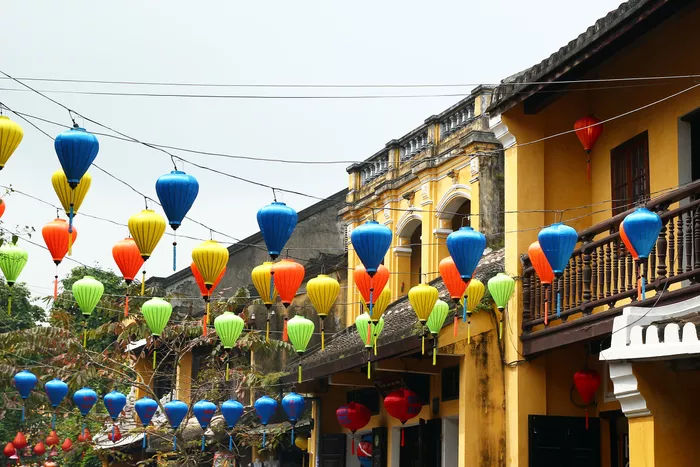
iStock Editorial / Getty Images Plus
Day Four: Bringing home the New Year’s Tree – Hái Lộc Đầu Xuân
31st January 2019 (26th of Lunar December)
Decorating the house is an important Tết ritual and the most famous decorations are blossoming fruit trees. Around the 26th of the last lunar month (31st January) Vietnamese cities and markets are flooded with fruit blossom and kumquat trees. You’ll see them lining the streets and comically strapped to the back of motorbikes. It’s an old tradition that represents fertility and prosperity and signals a bountiful year ahead.
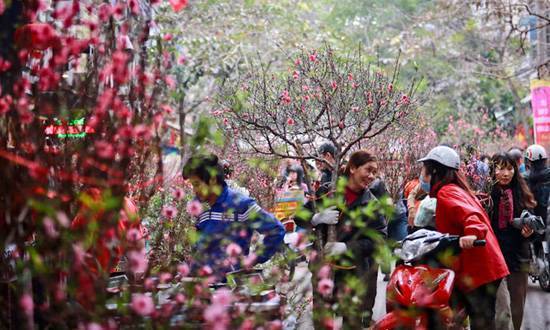
In the past many Vietnamese used to keep and tend their own trees in their gardens. With rapid urbanisation and fewer places to look after plants, this has become hard for people in the big cities. Lots of families keep the tradition alive by keeping a tree in their hometown and paying for someone to tend it for the year. When Tết, comes around they bring the tree back into the city around the 26th of the last lunar month and return it on the 5th day of tết.
Other tết decorations include bowls of ripe fruits, yellow flowers that represent longevity, old fashioned paintings and calligraphy of ancient Vietnamese proverbs. In Southern Vietnam some cultures create their own Tết tree by fixing each of the elements above onto sticks of bamboo. If you are in the old quarter of Hanoi or downtown Saigon you might see street stalls covered in a blaze of red and yellow paper offerings calligraphy and flowers ready for the new year.
Prepare for Tet
The Vietnamese people start preparing plenty of things for Tet at the beginning of the 12th lunar month, which is also called “Tháng Chạp”.
Typically, candies and dry industrial products appear a lot in the local markets and supermarkets in Vietnam.
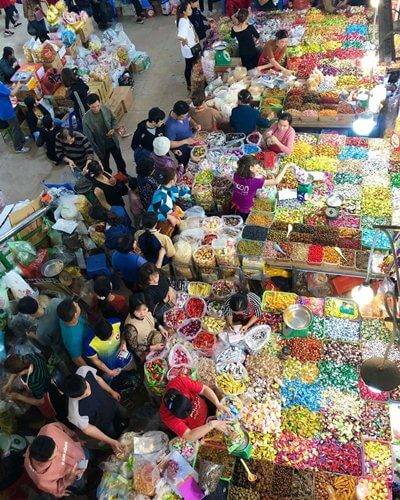 Tet market in Vietnam | @chuchu468
Tet market in Vietnam | @chuchu468
Visiting these places during that time, you can find colorful stalls and very active trading life, which offer so good chance for beautiful photos.
Although plenty of goods display, the price starts going up. The bargaining of the market culture reduces or disappears because of busy exchange. Most people buy and sell quicker than normal days.
Many fashion shops show new clothes, so many models of the previous months are sales off.
Going shopping for Tet is a fun activity for most people in Vietnam, which gives so many memories of childhood.
